How to fix a leaky toilet valve!
Is your toilet leaking on you while you're leaking on it? Put that toilet in its place & reestablish the longstanding double standard of you being the only one who gets to spring a leak in your house!
2237
STEPS
TOOLS
TOPICS COVERED: 1. Intro, 2. Turning off the Water, 3. Replacing the Valve (Toilets & Sinks), & 4. Dealing with Leaks.
1. INTRODUCTION: This is an easy process, but because there are so many tips and potential things that can go wrong, it's a pretty long guide. Read it all the way through before you loosen anything!
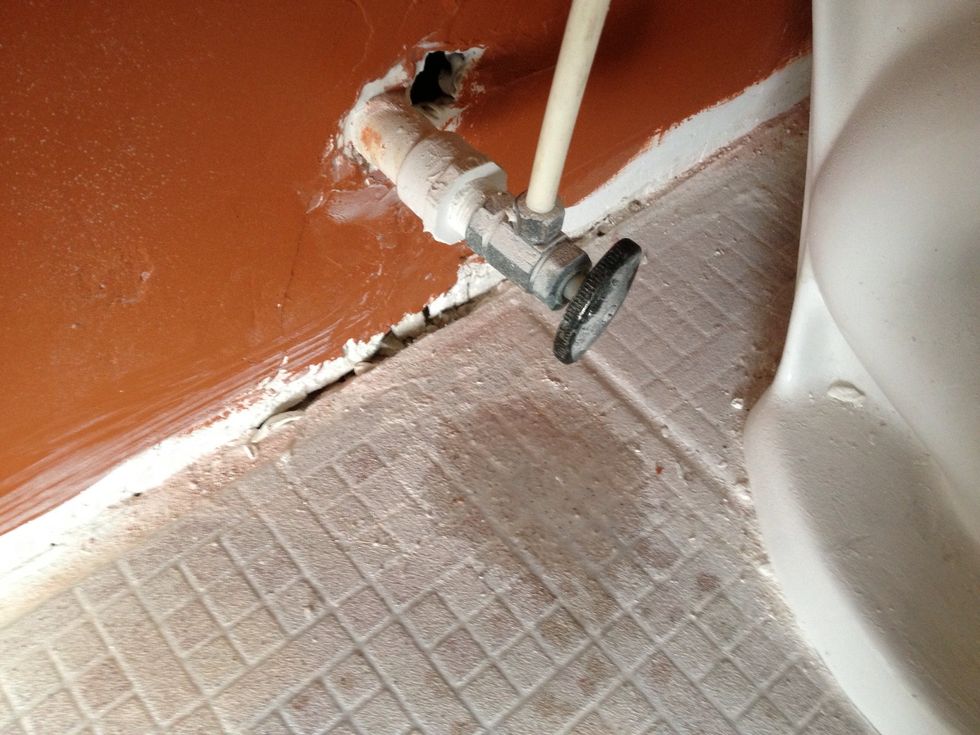
This is a leaking toilet valve. Maybe it drips, maybe it pours or maybe you just notice a mysterious puddle on the bathroom floor and it's the culprit.
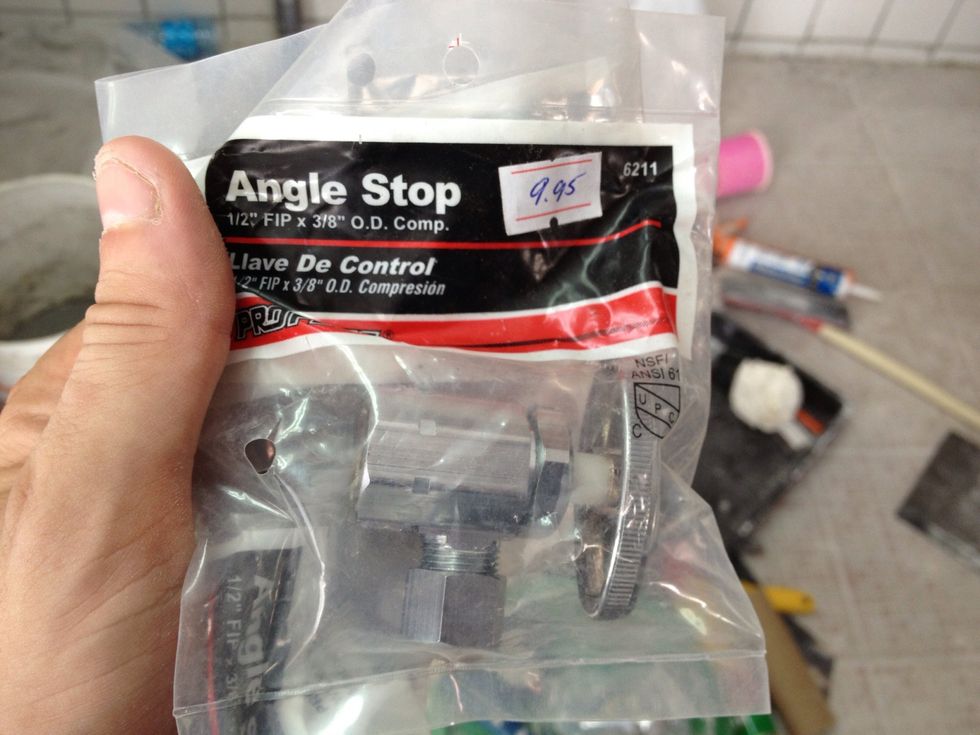
Here's a brand new valve. That $9.95 on the package is in Belize dollars, which is a 2:1 exchange rate to USD, so that "$9.95" is really $4.48 USD. Your daily world culture lesion... Lesson* whatever.
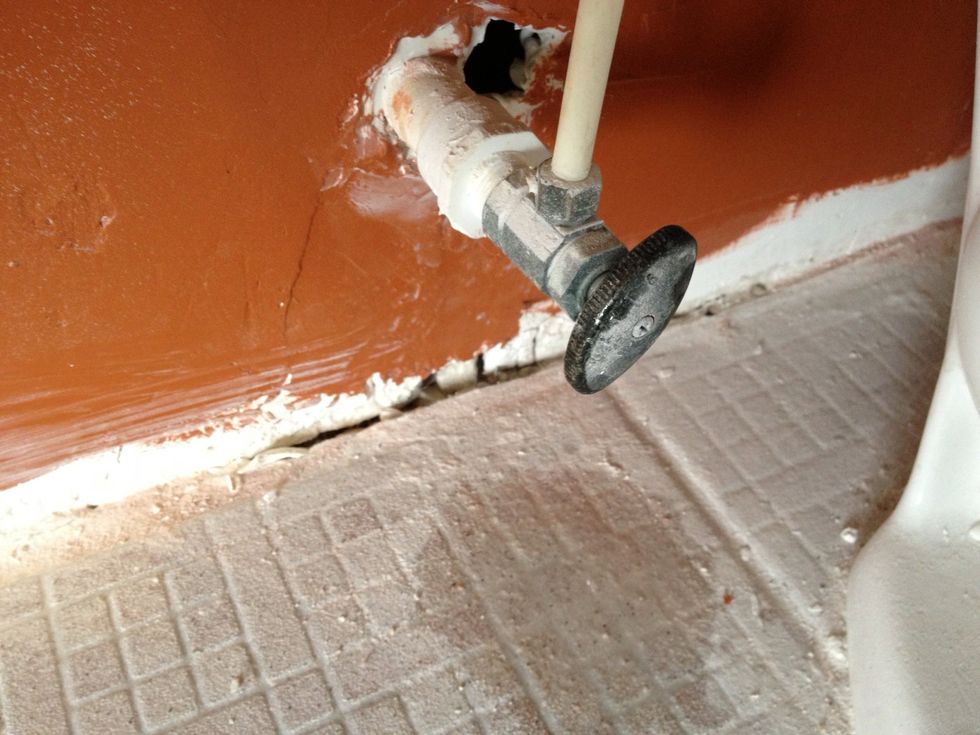
These "cut-off" valves exist to stop water flow through the pipe so you can replace the sink faucet or toilet mechanisms without pressurized water shooting all over the place.
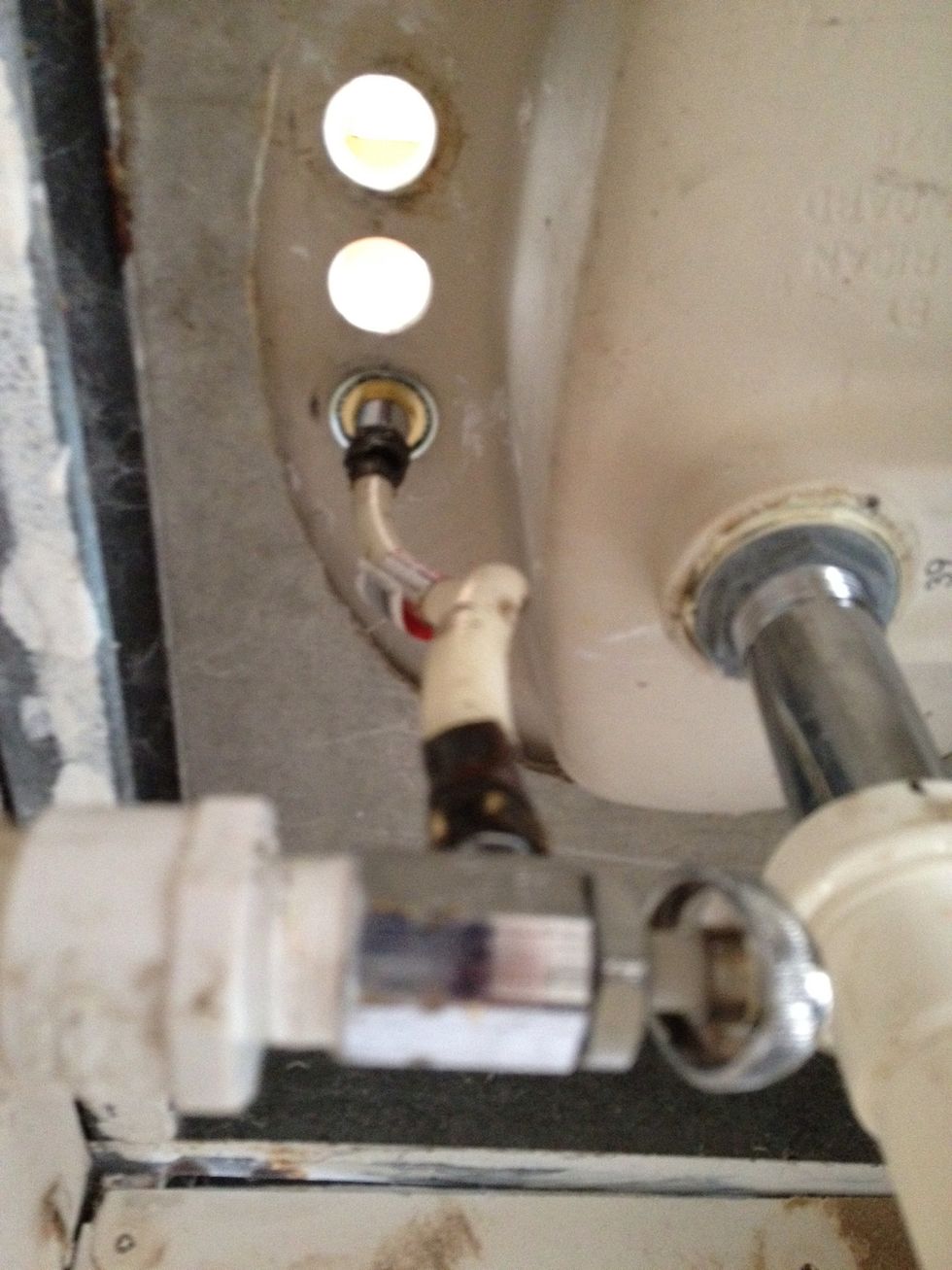
The good news is that it's the same valve for sinks as well, so this trick generally works all around.

Here's the new valve out of the package. Cute little guy isn't it? Here's how it comes apart...
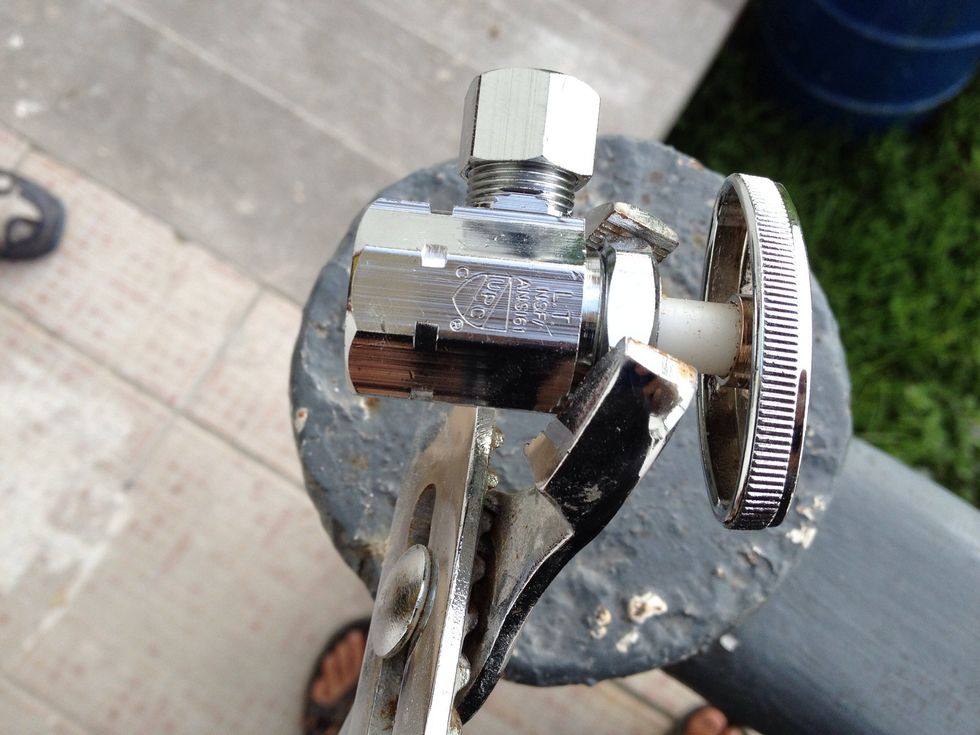
Unscrew the piece you see the wrench holding in the picture first (collar). Just loosen it with the wrench and then use your hand. Once that's loose, unscrew the little plunger by turning the handle.
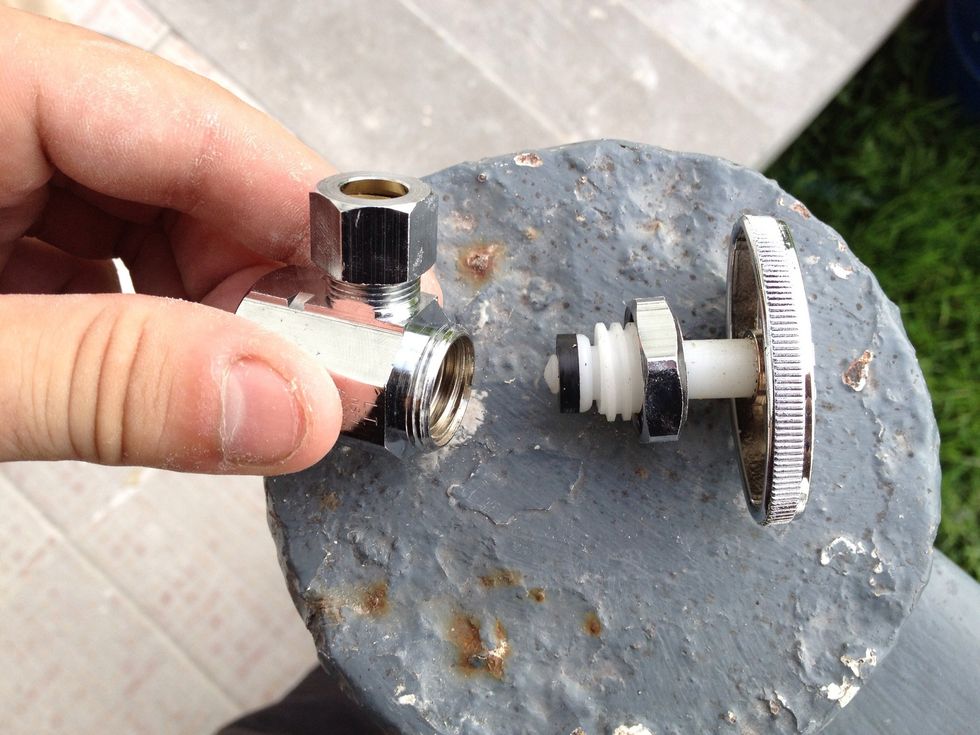
Notice the little rubber washer on the end of the threaded plastic plunger. That's what is most likely missing or damaged on the old valve we are about to replace.
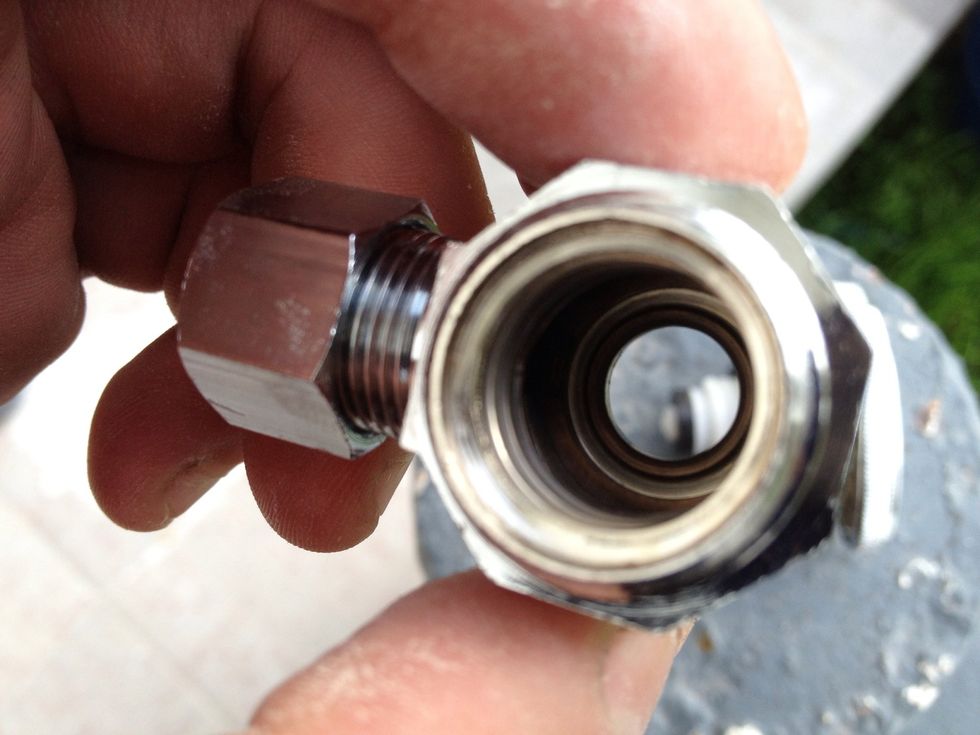
Notice the body or "housing" is all metal with no moving parts or rubber pieces to wear out or erode.
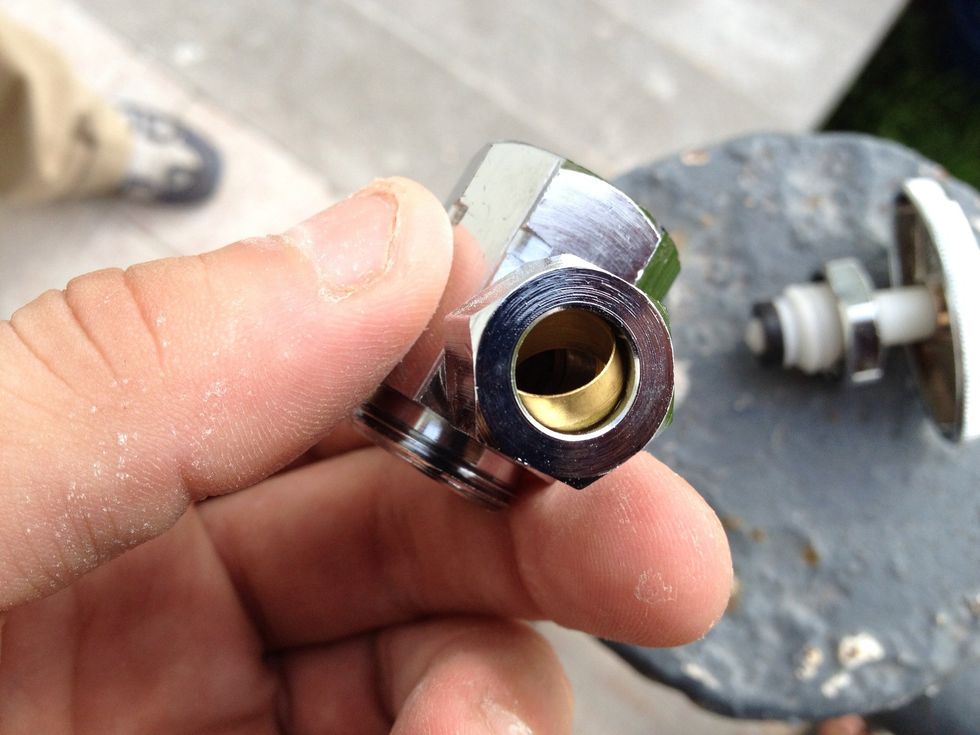
Don't worry about this part. For the purposes of this tutorial, you won't need it or the metal housing, but I'll explain what it's for at the end... you know, for posterity.
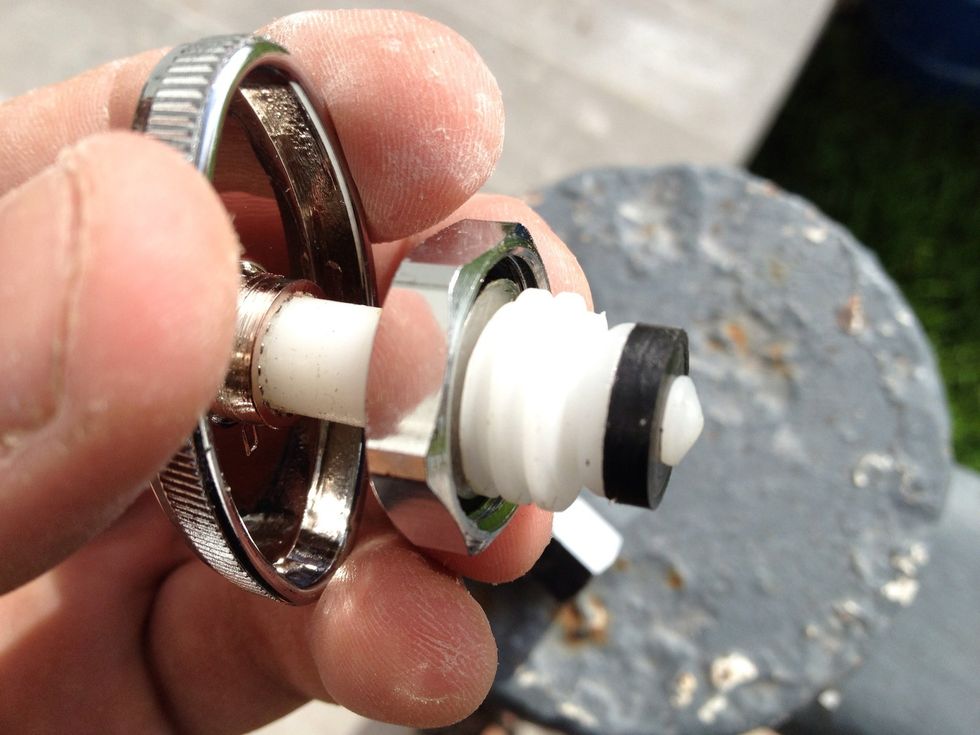
This piece is all you'll need believe it or not. It's called the "plunger". At least that's what I call it.
2. TURNING OFF THE WATER: Unless you want to explain to the neighbor why your house is flooded, read this guide all the way through before you loosen anything.
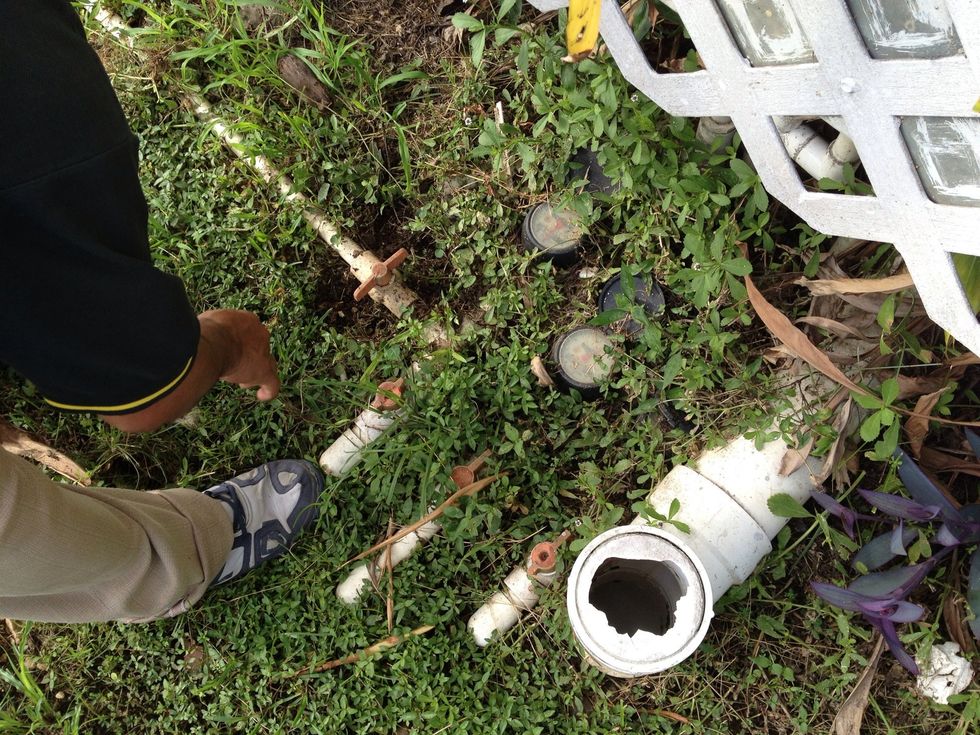
The bad news: Usually the cut off valve you're replacing is the only one, meaning the next higher up "cut-off" valve is literally the one to cut off water to the whole building. Good luck funding it.
You may find a cut off valve between the small one you're replacing & the large building cut off. Follow the pipes & try to find it. The pipes may run under the building or along the basement ceiling.
Usually it will look like the round metal tap for a garden hose spigot, but inline with the pipe. Turn that like you're turning off a hose spigot and it should turn the water off after that point.
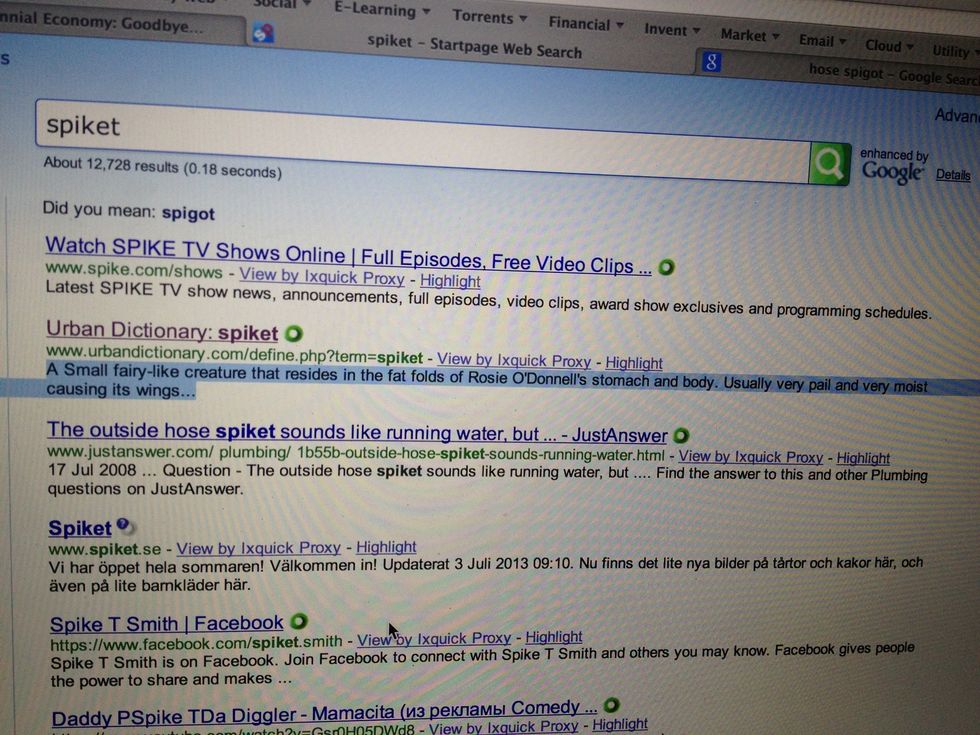
By the way, I googled "spigot" thinking it was spelled "spiket" & this came up on Urban Dictionary: "Spiket: a small fairy-like creature that resides in the fat folds of Rosie O'Donnell's stomach."

Who writes this stuff? Seriously.
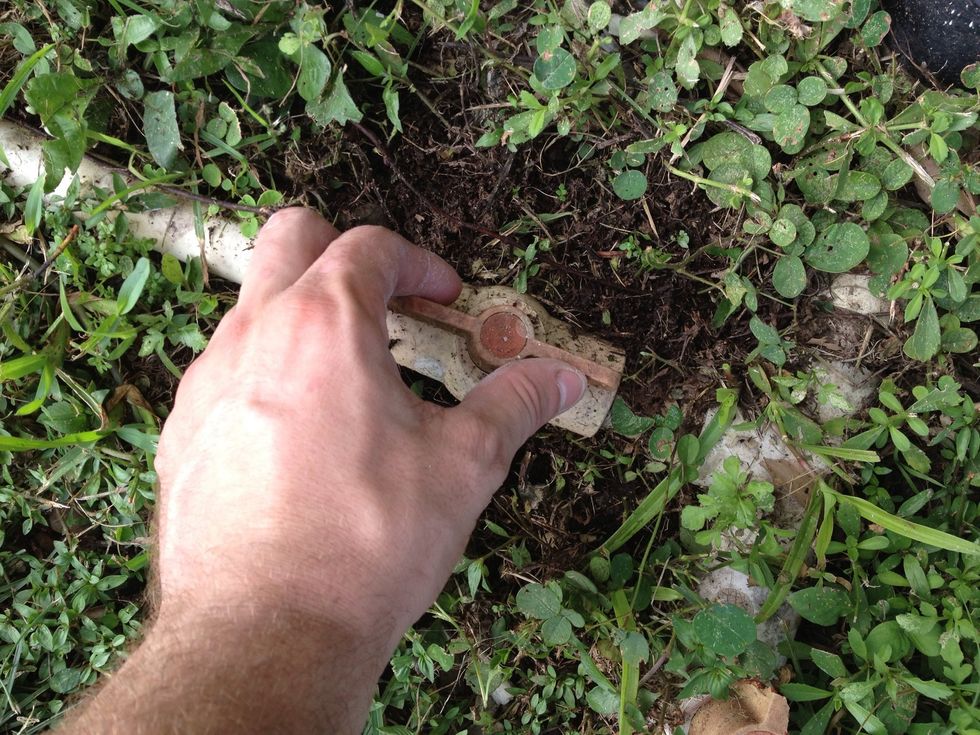
Here's the med school's cut off valve. Usually when the tabs are inline with the length of the pipe, that means it's letting water through.
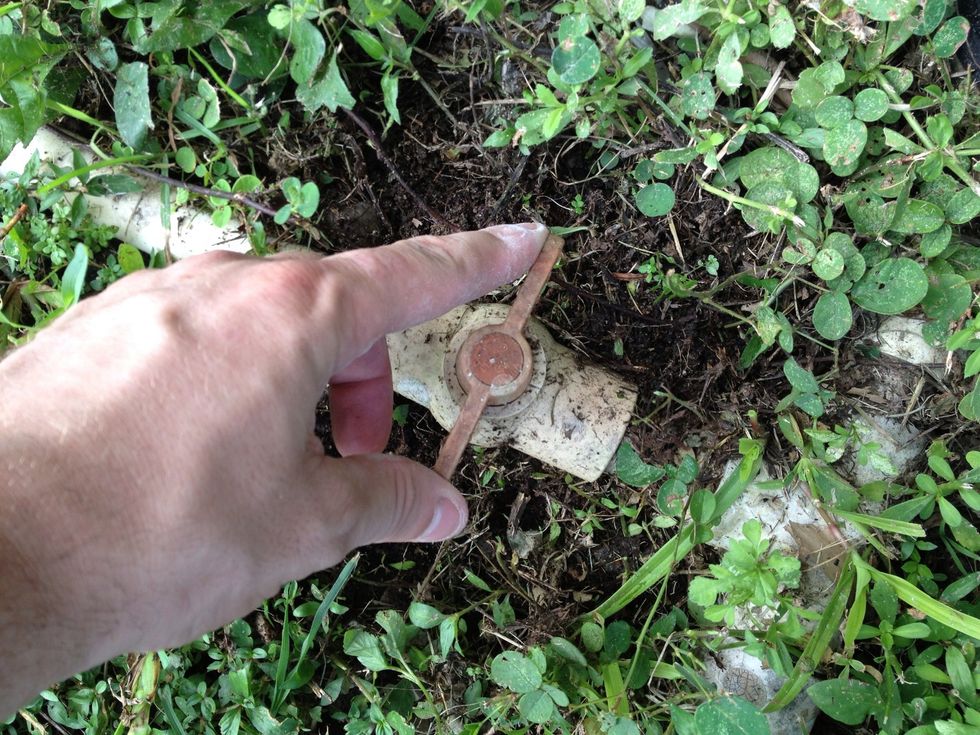
When you turn the valve tabs perpendicular to the pipe, that usually closes it, but your's might be different.
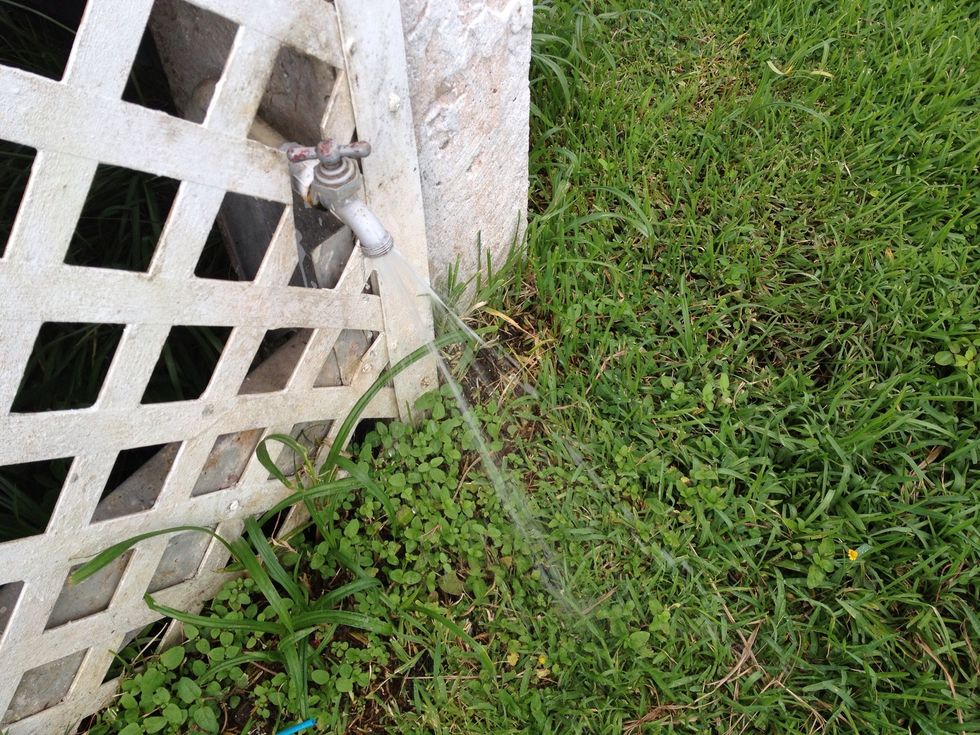
This time I left the outside hose spigot on so I could see if I turned the right pipe off without having to go all the way back to the bathroom to check the faucet.
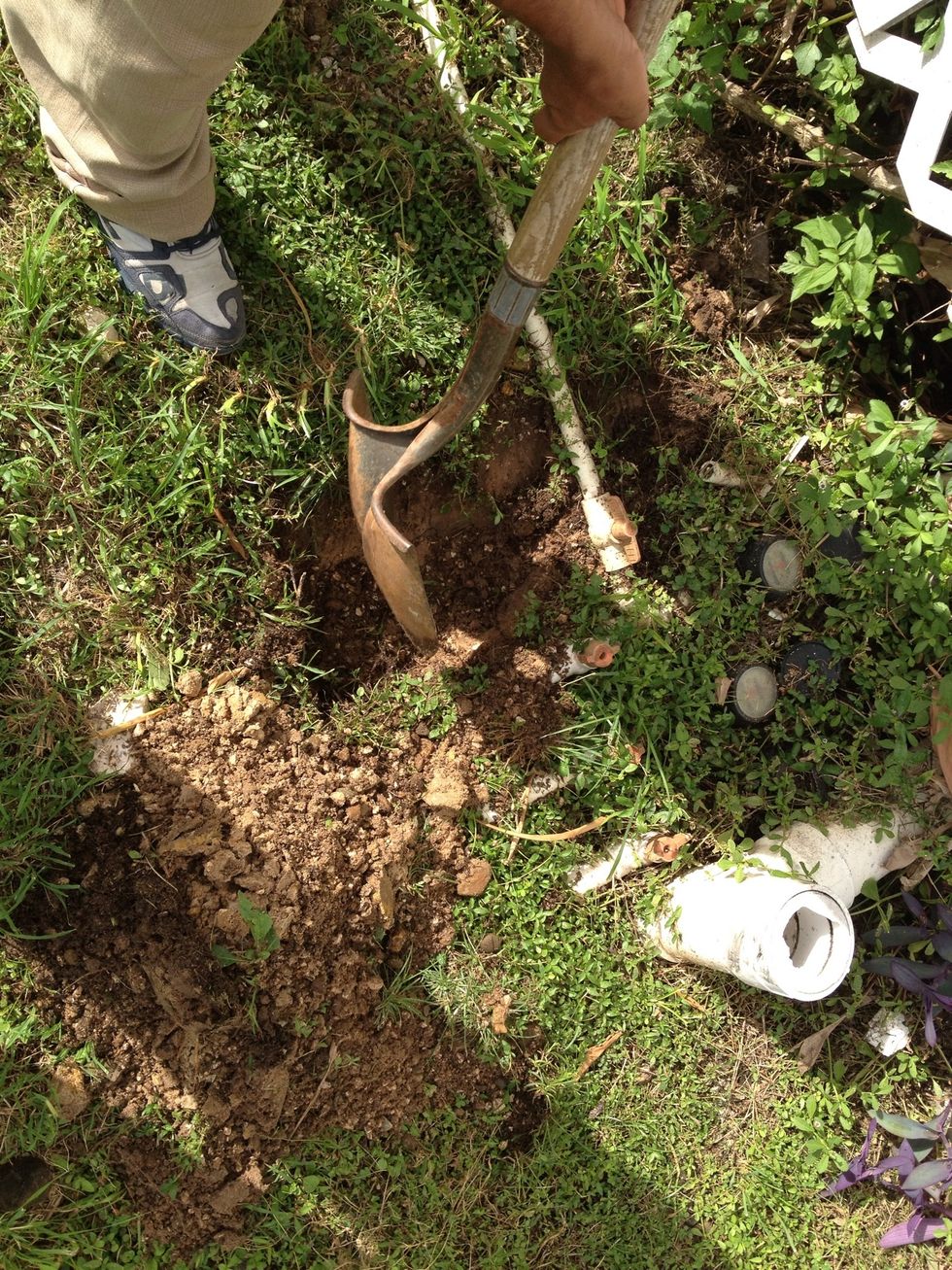
Mr. Chun, the med school's grounds keeper as well as a personal friend, told me the pipes had been changed a while back and helped me dig up the current pipes being used. Thank God he mentioned it.
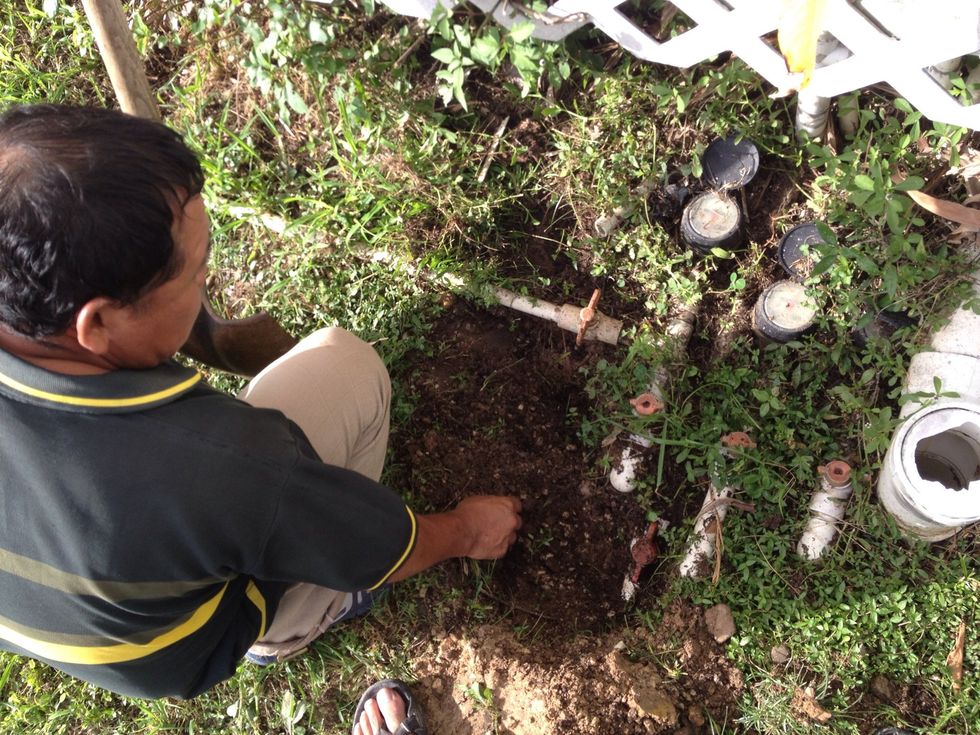
So Mr. Chun found some new pipes burried under the old ones and we proceeded to turn them off.
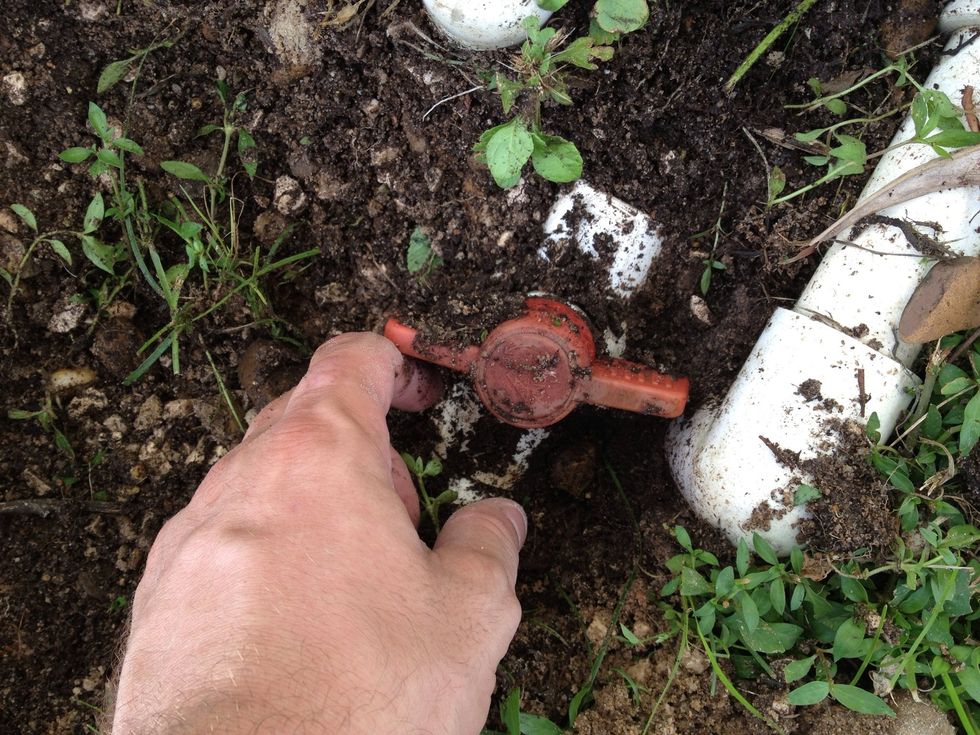
Alright! This should so the trick!
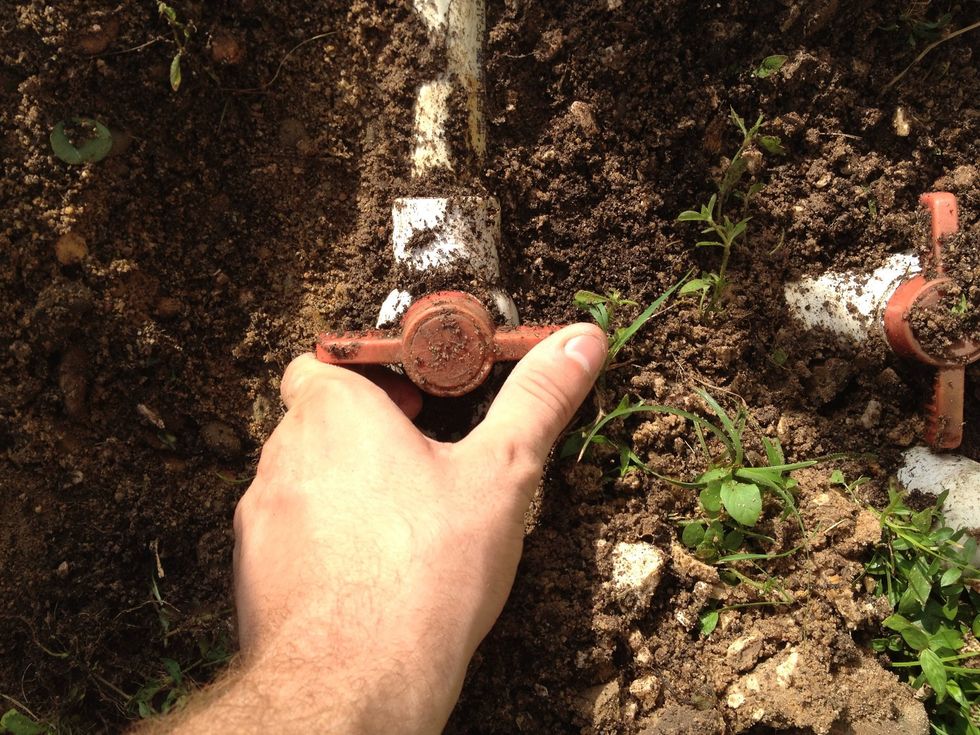
Third time's a charm, right?
3. REPLACING THE VALVE: The process for sinks is very similar to toilets, as the cut-off valves are the same.
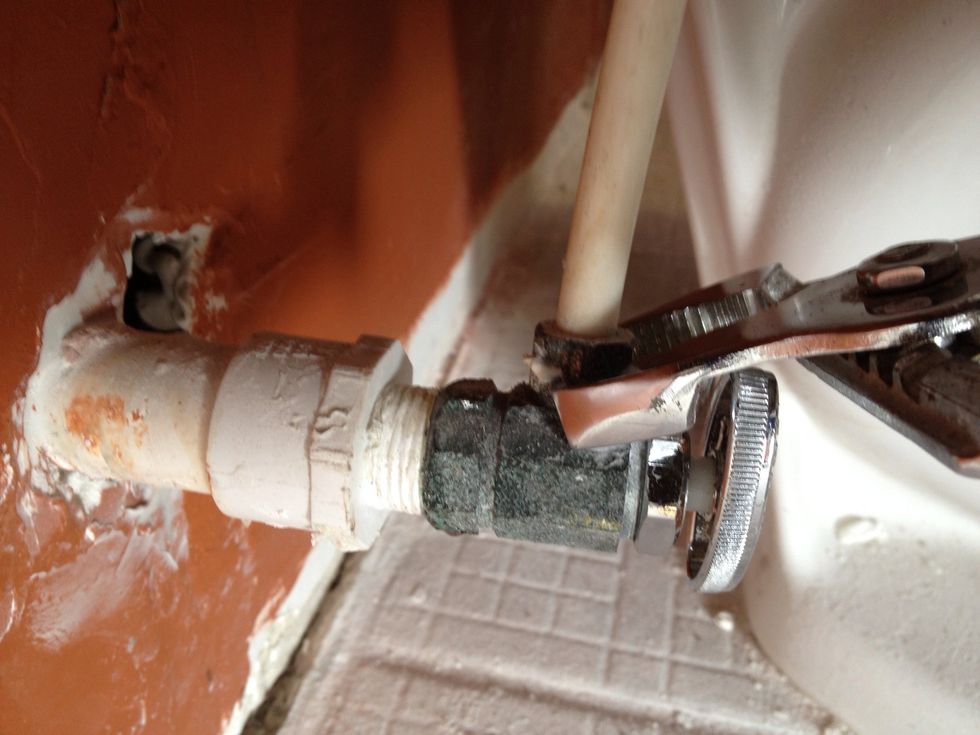
If we were replacing the whole valve, you would unscrew this piece first and disconnect the vertical hose you see in the picture...
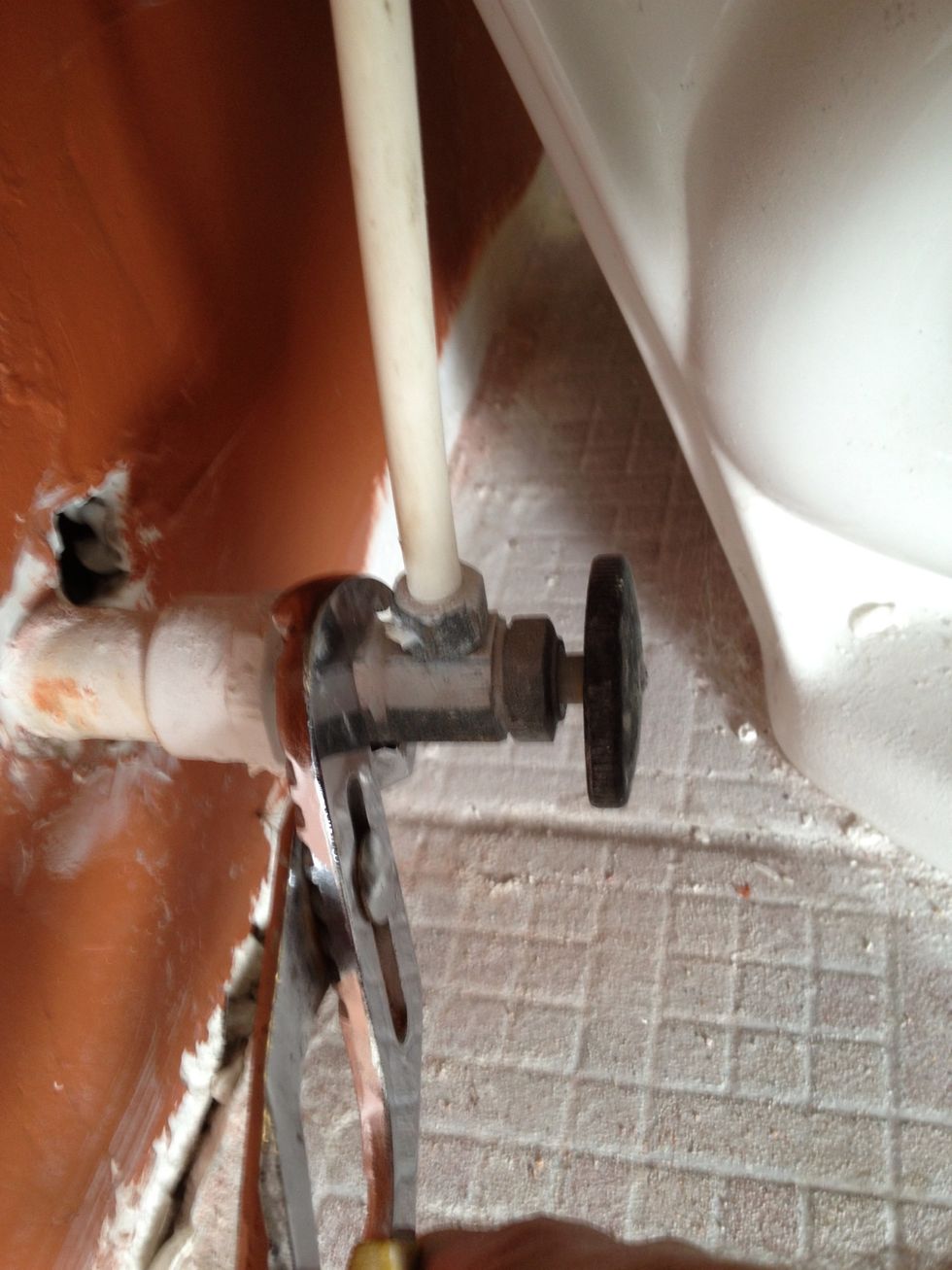
Than you would unscrew this piece...
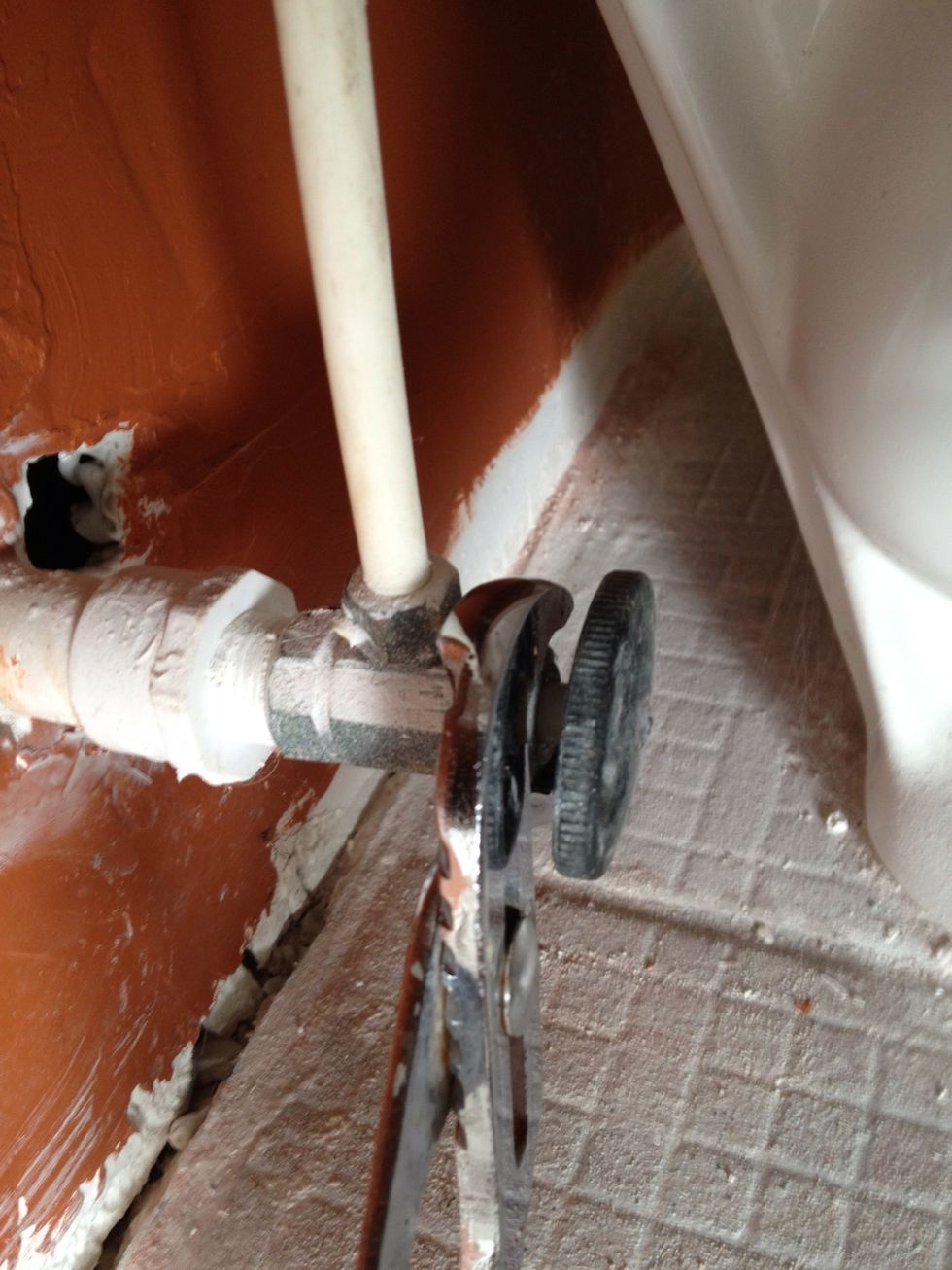
But... Here's a little trick. Remember how the valve housing is all metal with no parts to wear out, right? The little rubber piece that is likely worn out is on the threaded plunger, remember?

See what I did there?... with the exchange ra... Right, moving on...
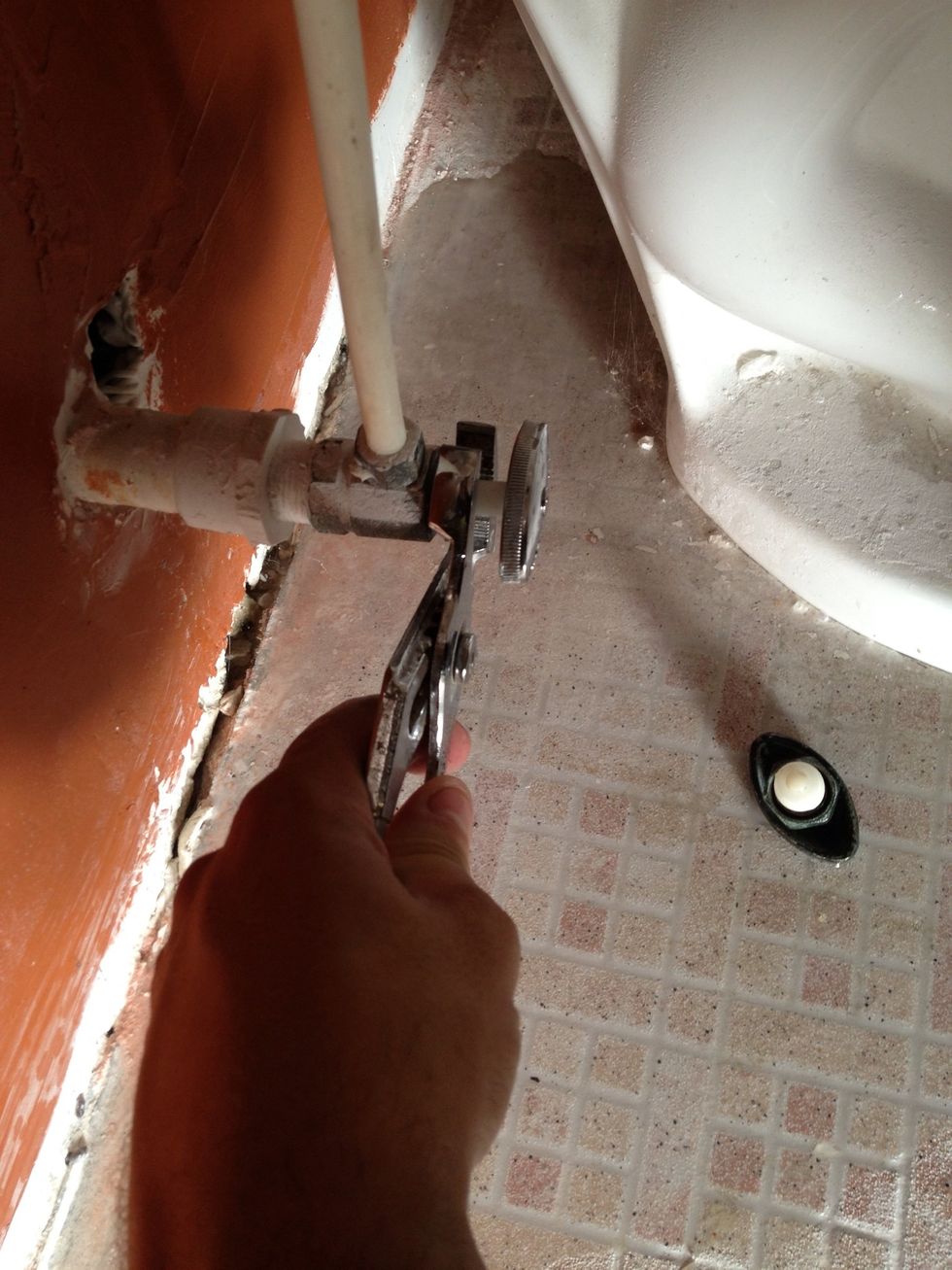
Screw the plunger in all the way and then tighten the metal collar with the wrench. Don't over tighten it though. You'll feel when it's tight enough... That's what she said... Sorry.
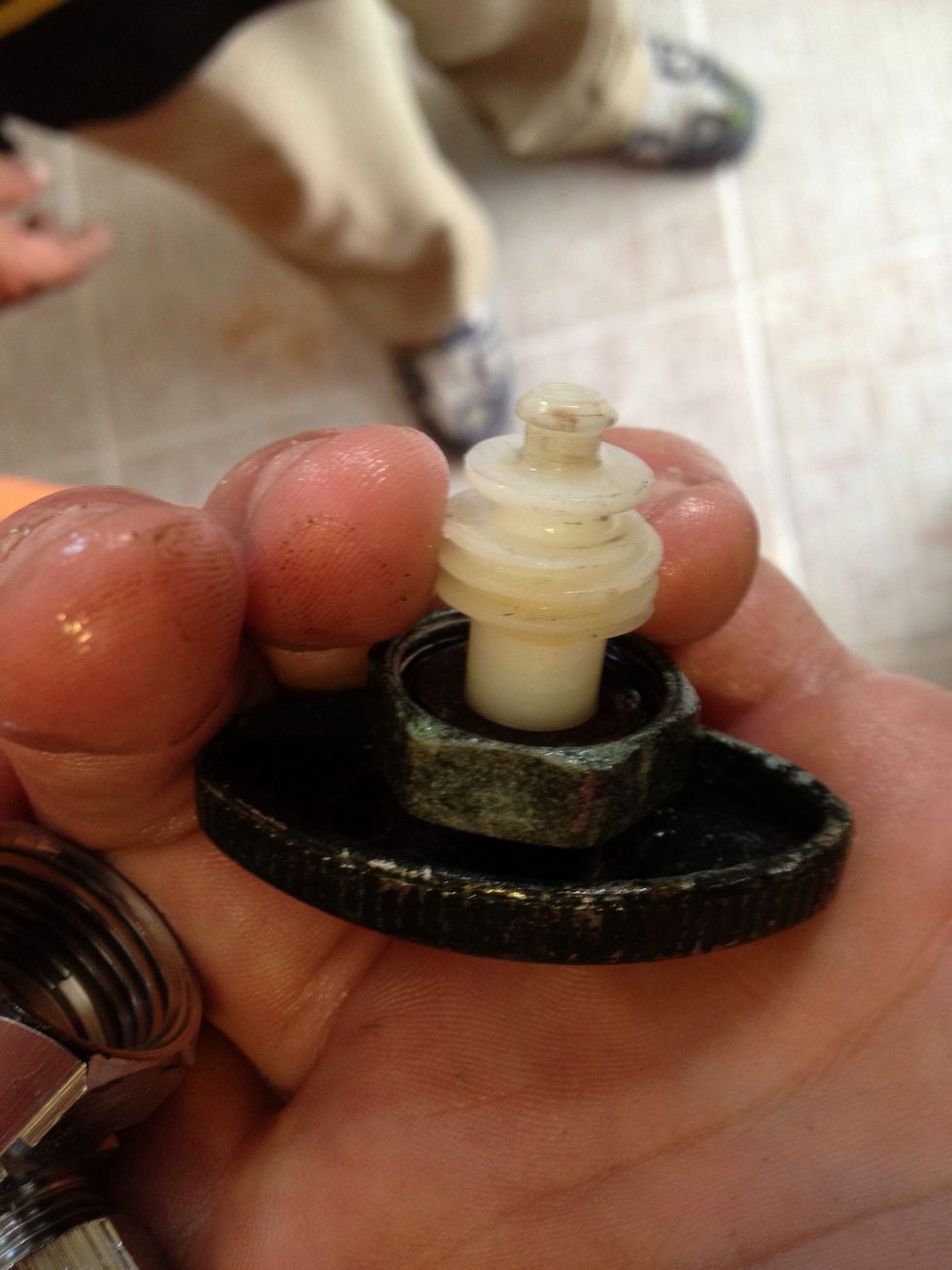
Ahaa!! I knew it! The rubber washer wasn't just worn, it was completely disintegrated.
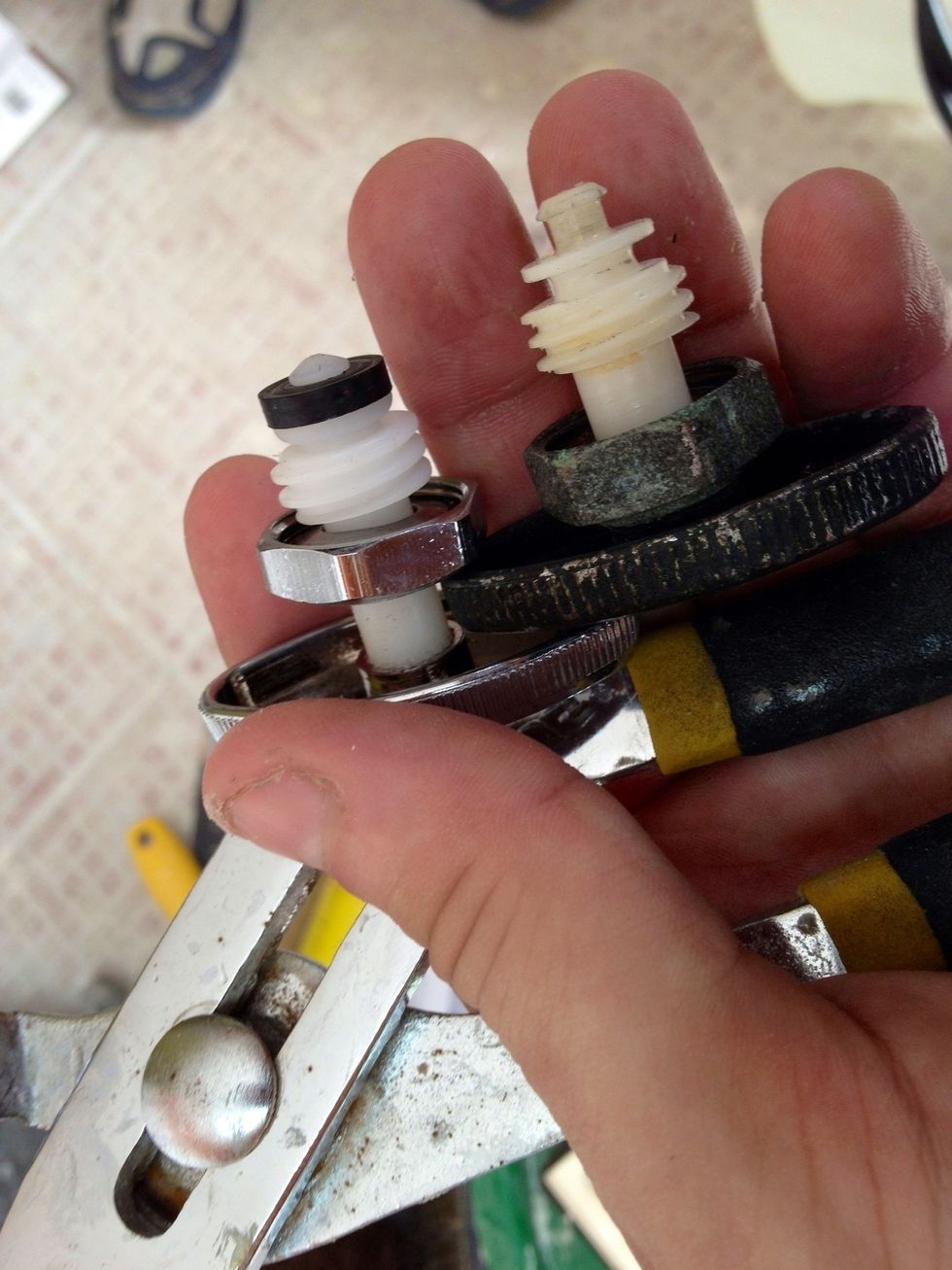
See the difference between the old one and a new one? The old metal housing however is likely still identical to the new one because it doesn't wear down the same way a 16 year old rubber washer does.
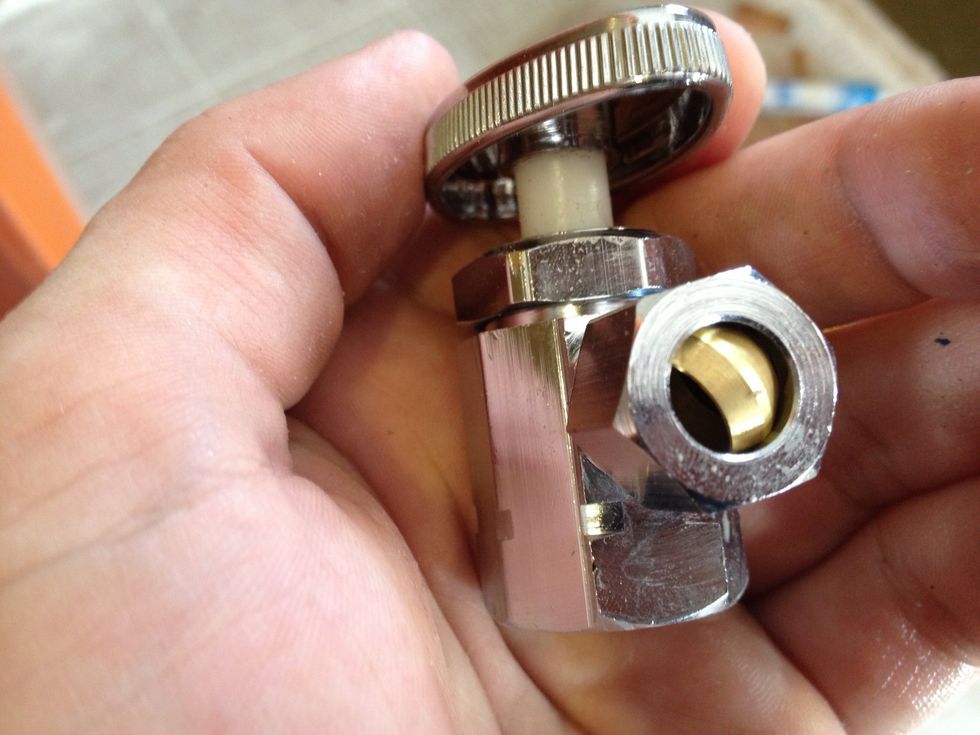
Ok, as promised, here's a bit more info on the housing. See that weird brass looking piece under the metal collar in the picture?
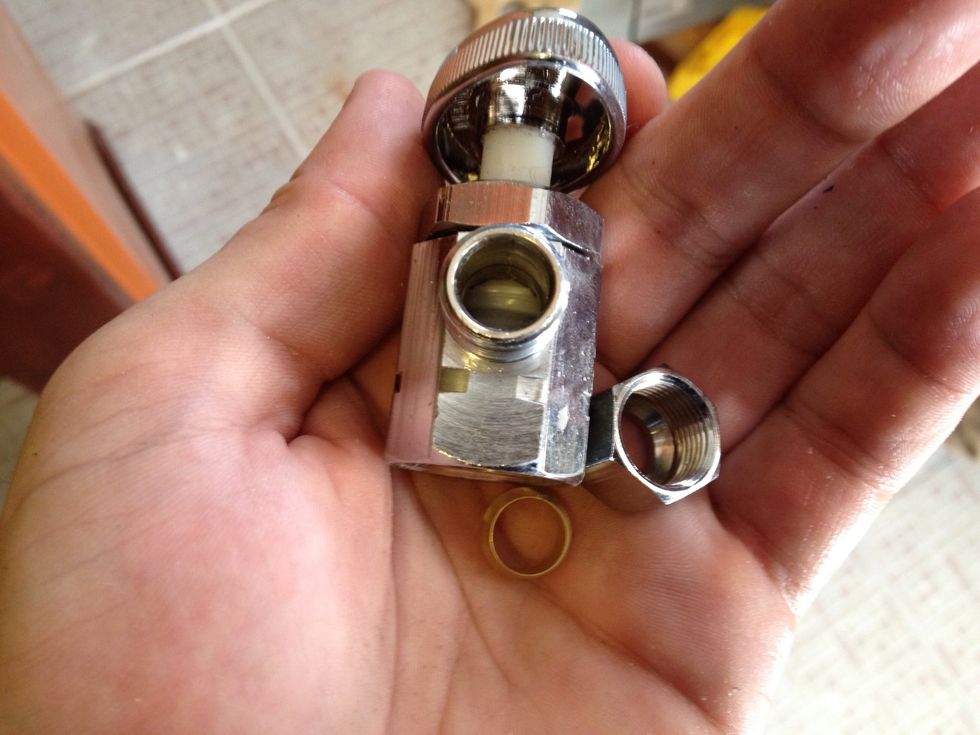
Remove the metal collar, you'll see that it's a brass ring which is an adapter for connecting a small pipe/hose for a toilet line. Sink hoses are a larger diameter, so its not used with sinks.
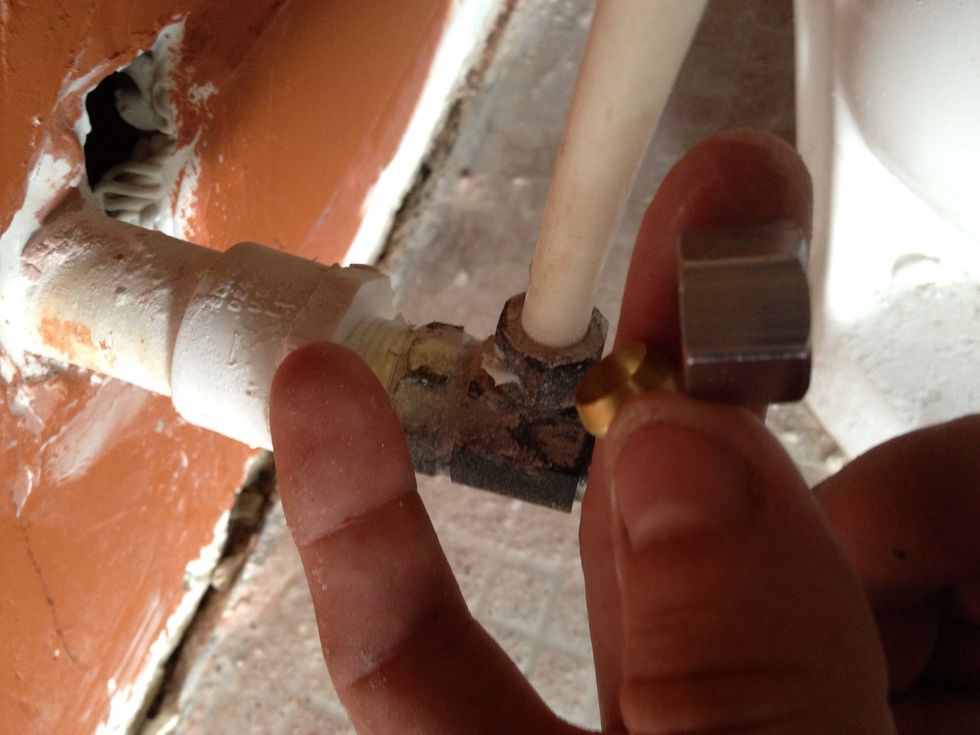
The ring adapter fits around the small plastic hose as if it was a ring and the hose was a finger. We left the existing housing in place, so we didn't use the adapter or metal collar in this guide.
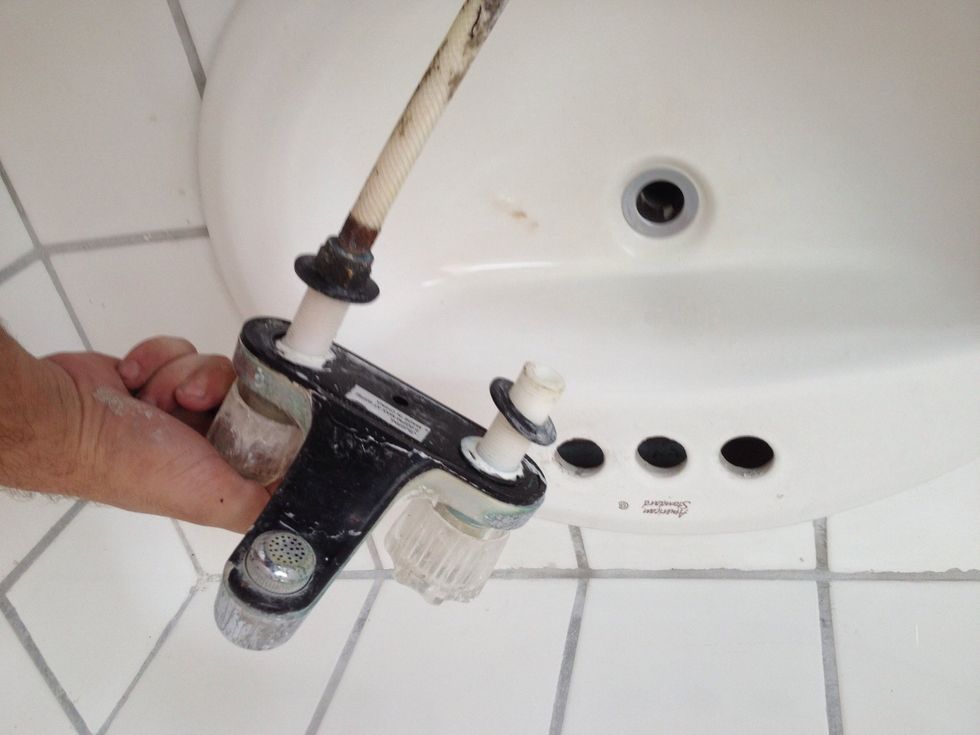
Sink hoses have a larger diameter so the brass ring adapter and metal collar are not necessary there either.
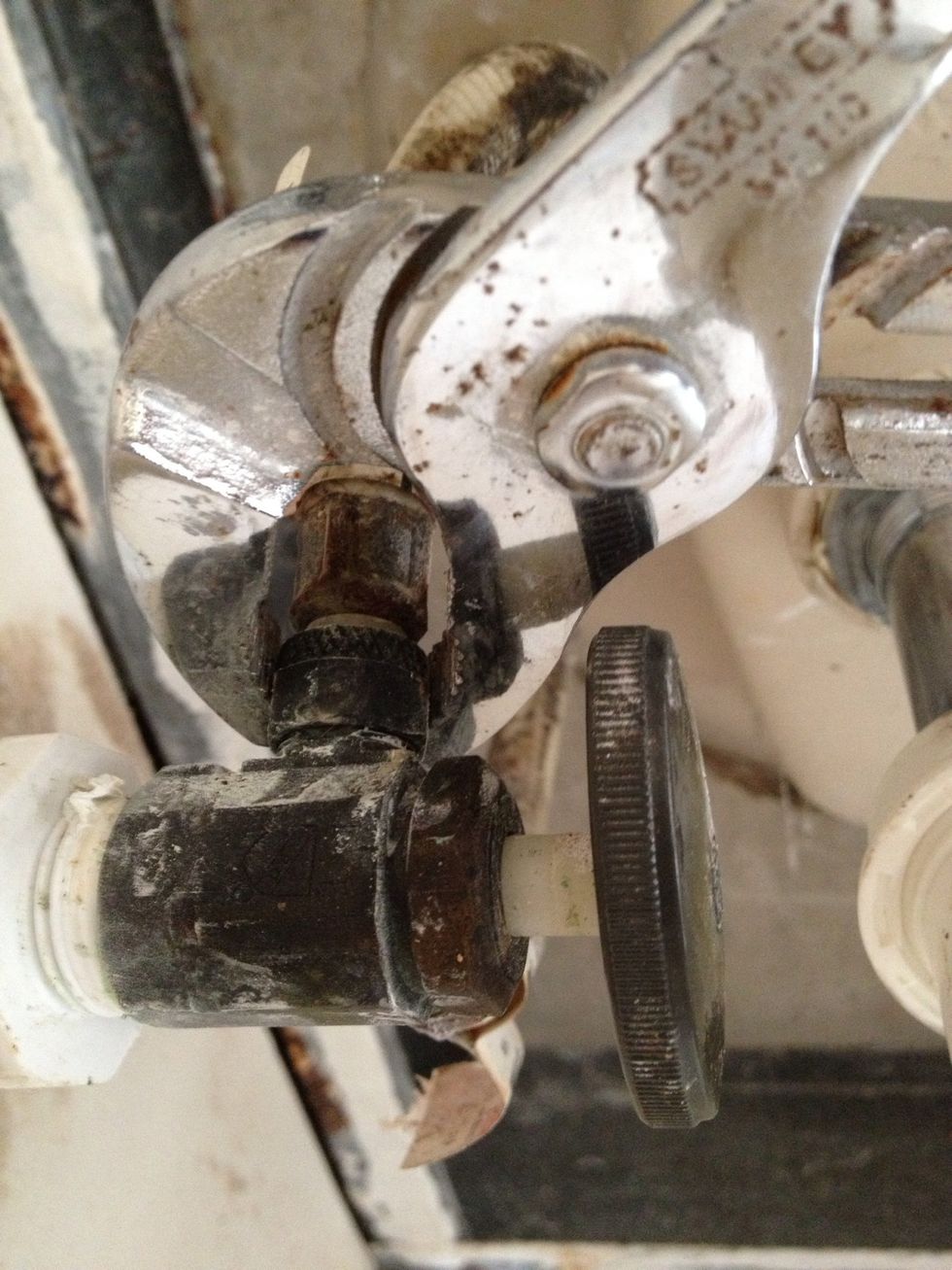
The sink faucet hose has a built in collar that screws in directly to the treads of the metal valve housing.
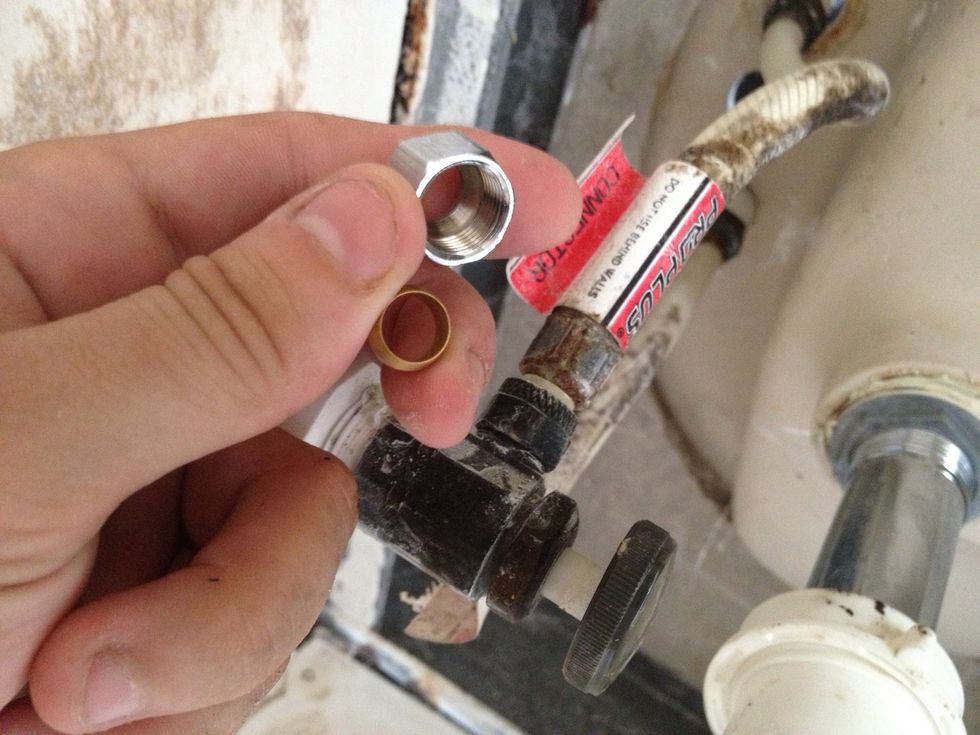
So you can toss the metal collar and brass ring that came with the valve if you're dealing with a leaking sink valve, or if replacing just the plunger on a toilet valve worked for you.
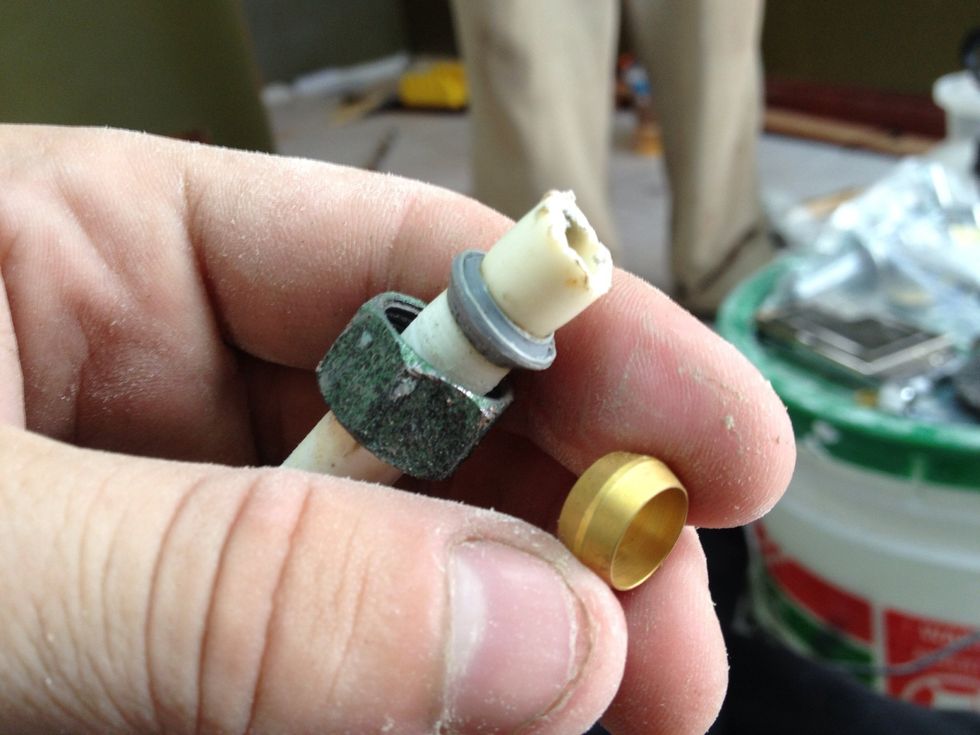
If you have to replace the housing, the hose is small so the metal collar slides over the end of the hose & the brass ring (or plastic ring like the old one on the hose in the picture) goes on next.
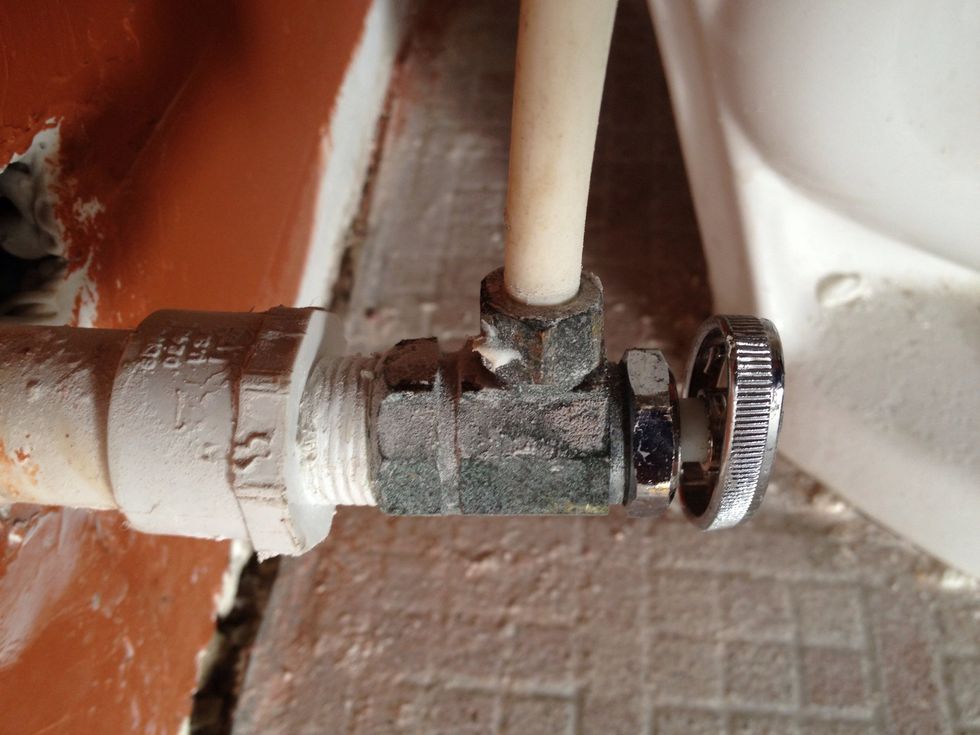
Push the end of the hose into the hole in the metal valve housing & tighten the collar down with a wrench. If it leaks, unscrew the collar, wrap some Teflon tape around the threads and reinstall it.

This is the finished non-leaking toilet valve. Notice the new plunger assembly in the old housing. Again, it wasn't necessary to change out the entire valve our case.
4. DEALING WITH LEAKS: take this step seriously. It's not my fault if you flood you're house because you thought you were done.
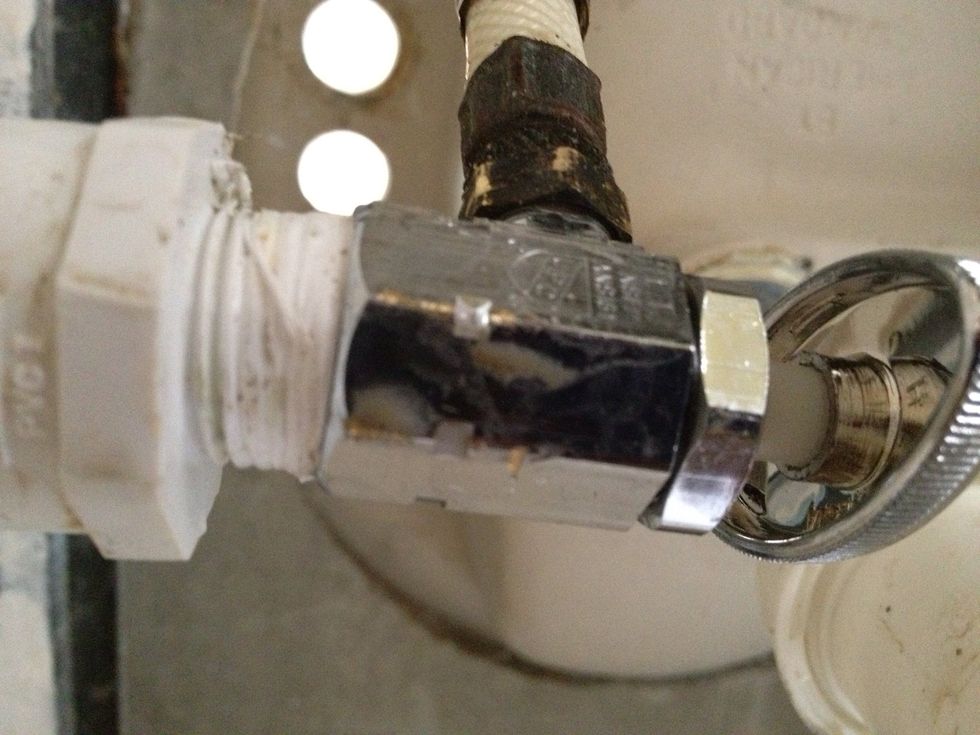
When you screw the valve onto the PVC pipe, be careful not to cross-thread it. Metal is harder than PVC & will cut through it. Also, Teflon tape around the threads makes it harder to line up threads.
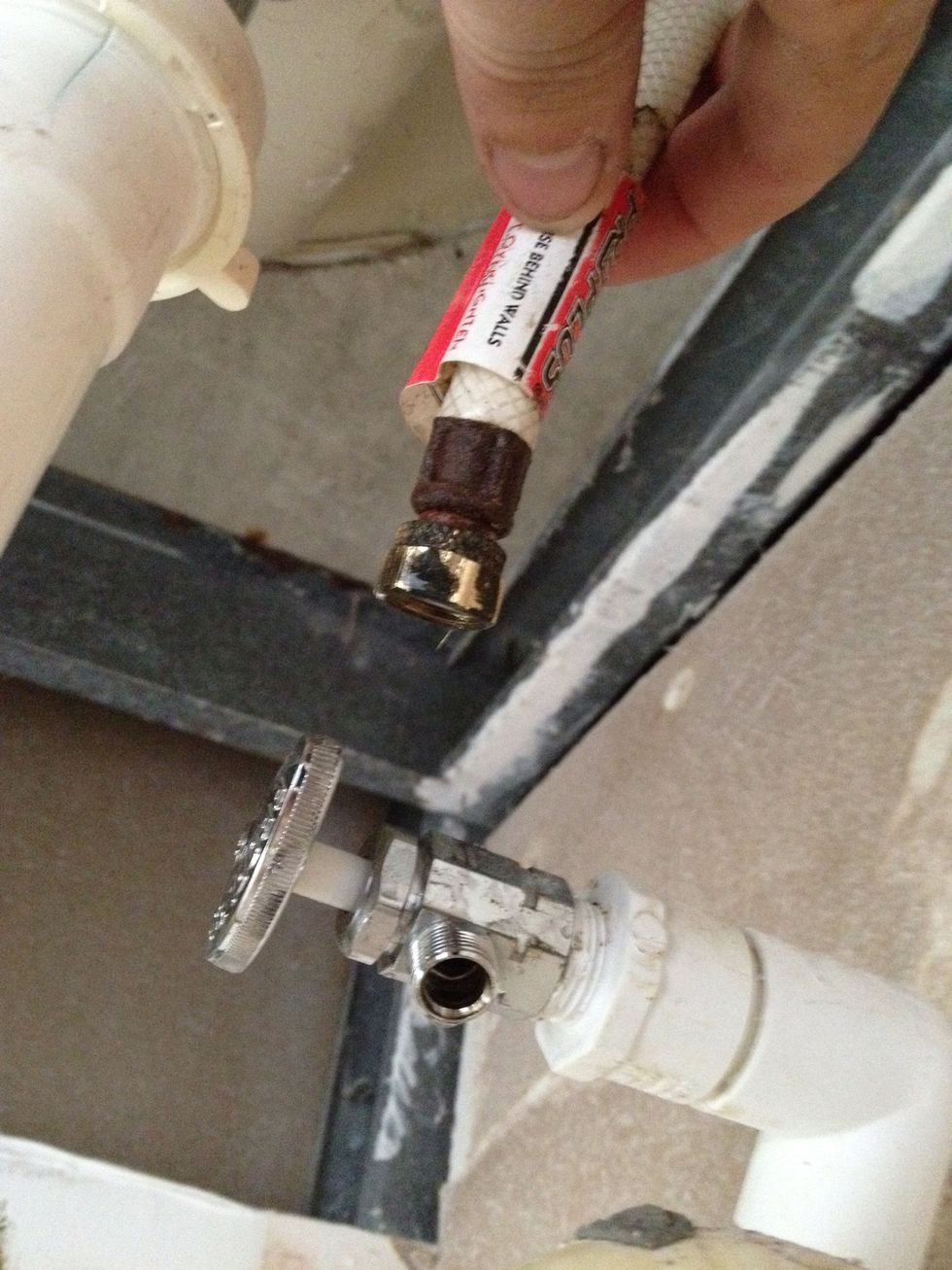
Sometimes when you tighten the valve onto the pipe as far as it goes the hole ends up facing the wrong direction. You'll have to loosen it to align the holes, which obviously might cause it to leak.
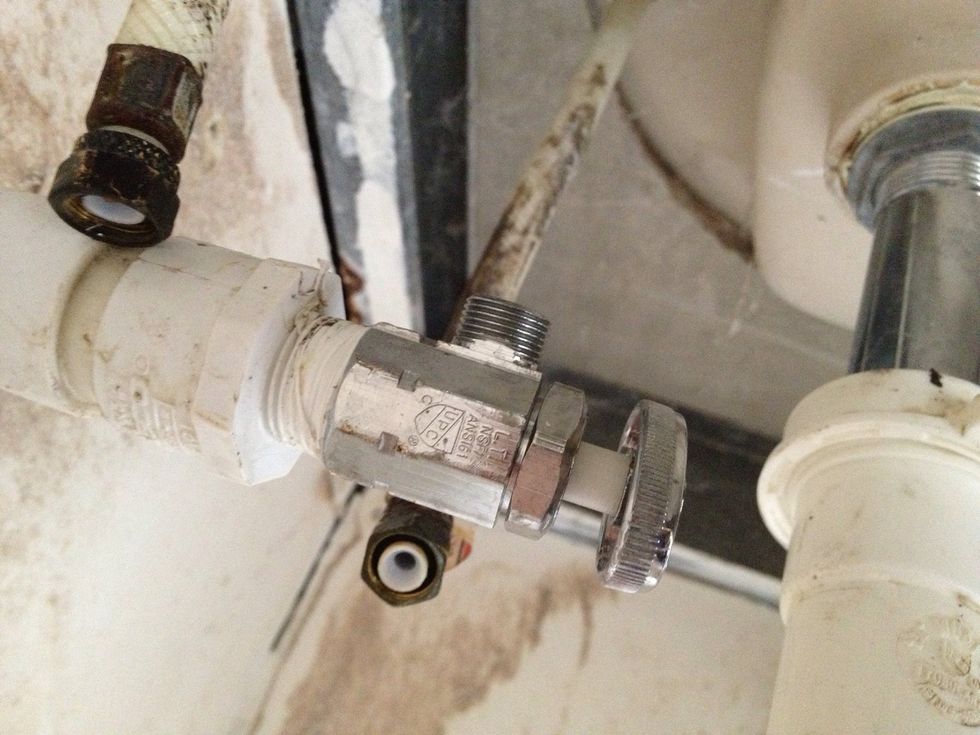
Rotate the valve around to face the necessary position and connect to the hose. Again, this will obviously loosen the valve and may cause it to leak. You can also just buy a longer hose so it reaches.
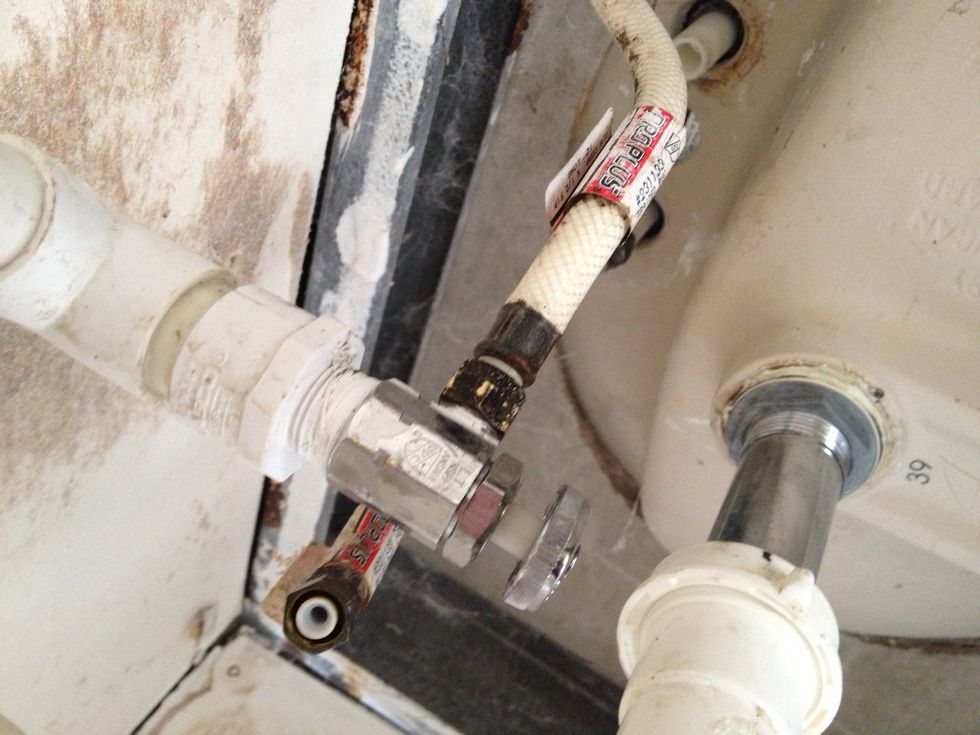
Hook everything up and tighten it down. Use Teflon tape on the threads as needed.
As you can see, it's leaking where the metal valve threads screw onto the PVC pipe. But fear not, I have a trick!
If this trick works for you, check it a few days later to make sure it's not leaking again. If you want to play it safe (which I would) take it off, tape/caulk the threads and put it back.
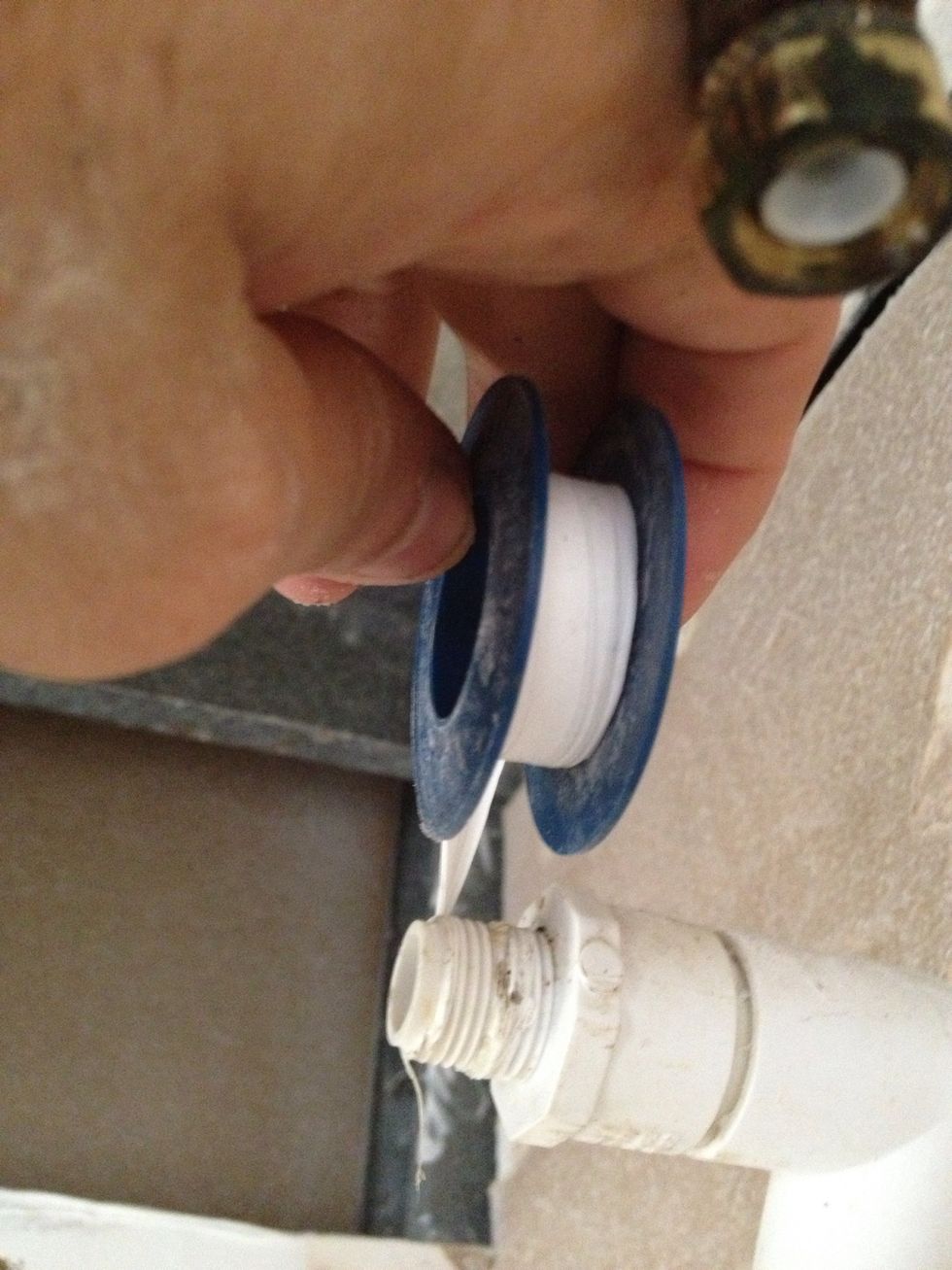
Unscrew the valve all the way, counting the number of turns it takes to come off. Remember that number for later. Then tape the hell out of the threads with Teflon tape.
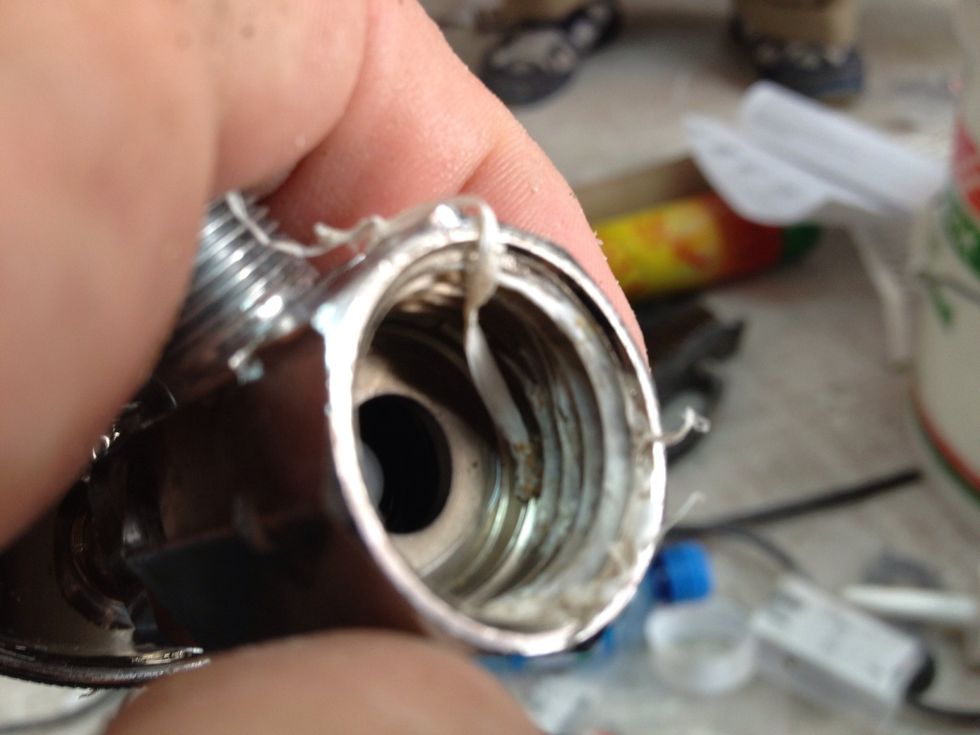
When the threads are tightened, the tape gets shredded & fills the thread valleys to seal any space that would have been between the metal treads of the valve housing & the PVC threads of the pipe.
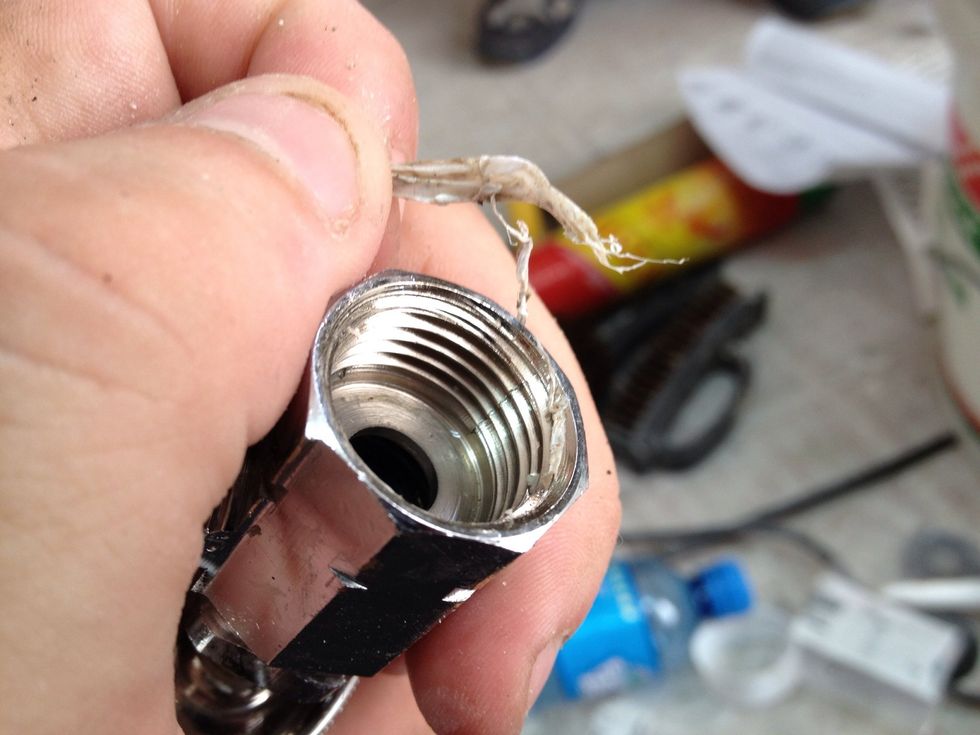
See how the pressure of being smashed between the threads compacts the tape together almost like a bead of caulk?
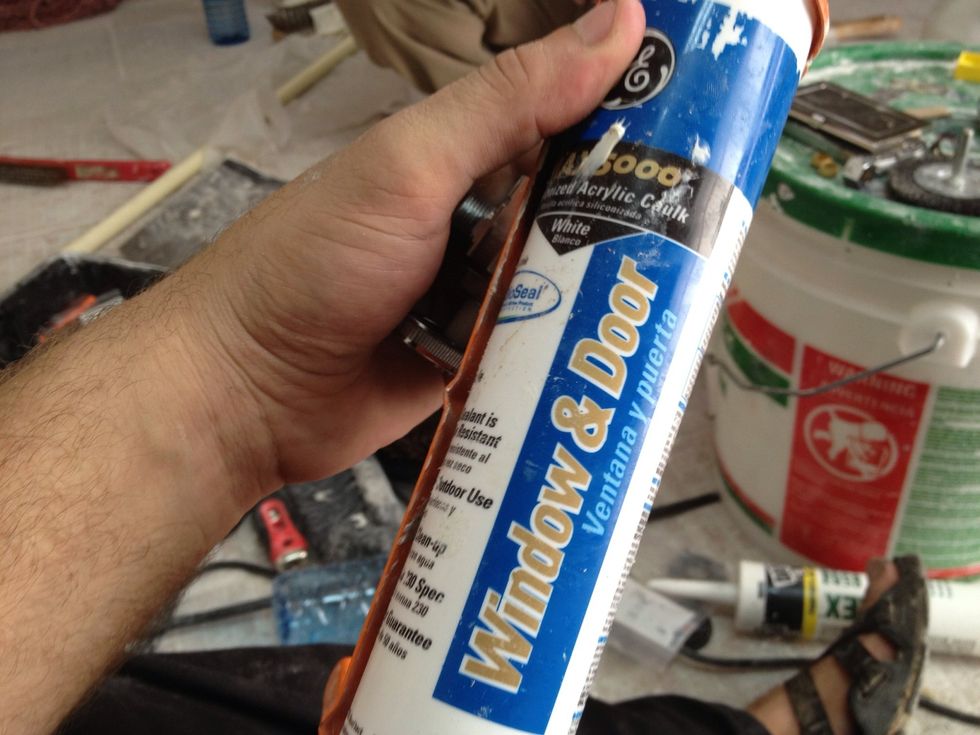
I really don't want to do this again so in addition to the tape on the PVC pipe treads, I'm putting a small bread of caulk on the metal valve housing treads.. Use only 100% silicon caulk for plumbing.
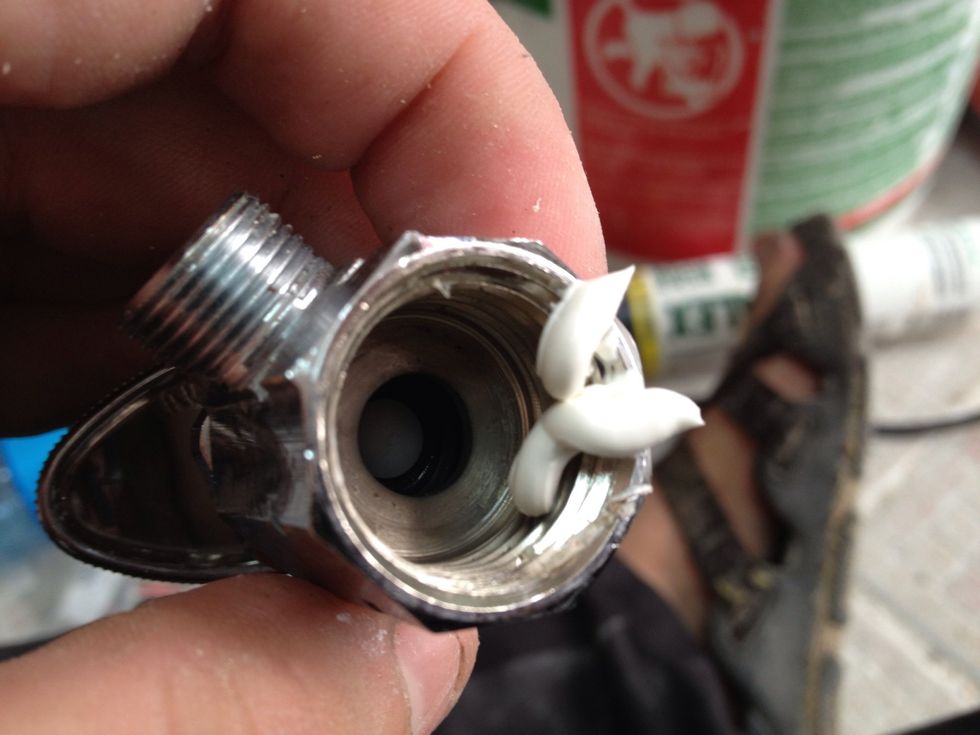
Don't put too much, you don't want to clog the hole on the valve. Just a lIttle will do, believe me.
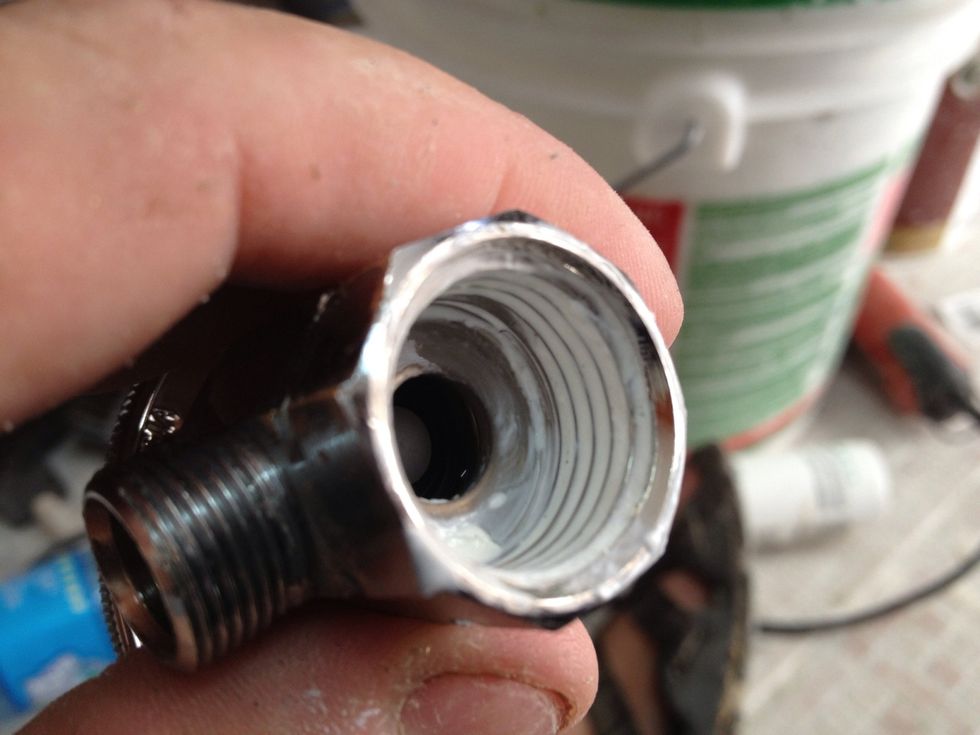
Spread the caulk across the threads with your finger. Clean up any excess caulk so it doesn't clog the hole when you screw it onto the pipe.
Screw the valve back on the PVC threads almost the same number of times it took to unscrew it, but stop before you turn it past the point where the hole facing up.
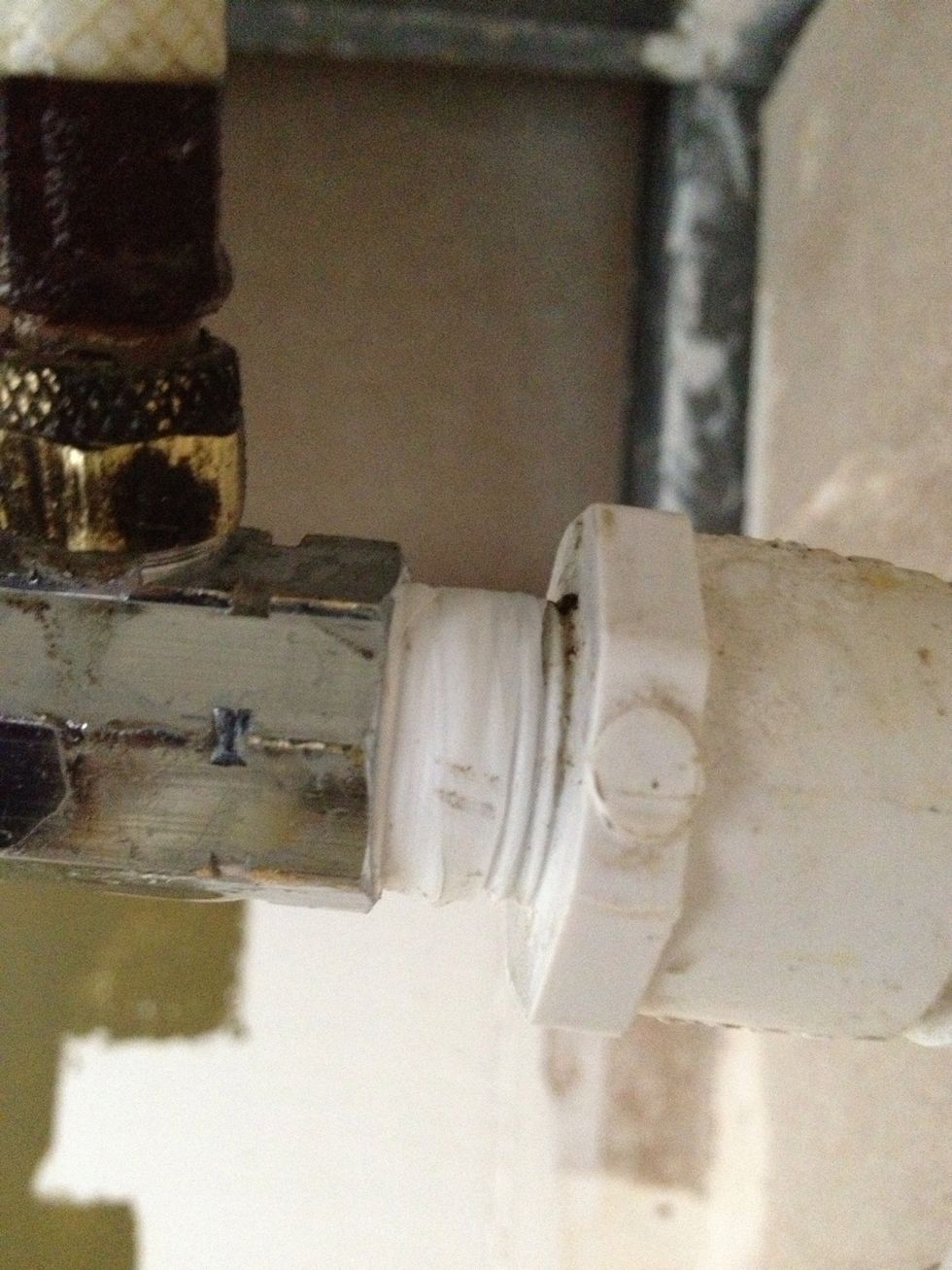
Now we have a double whammy (tape and caulk). If it leaks after this, you have pissed off the gods or something.

They say a smart man learns from his mistakes, but a wise man learns from others'. Hopefully, you just learned from mine. Enjoy!! -Med School Mike www.MissionMedSchool.com
- 1.0 Replacement Valve
- 1.0 Channel Lock Wrench
- Caulk or Teflon Tape
- Access to Turn off Building's Water
Cocchini Corp
Medical Student. Former US Army, EMT, Firefighter & DYI fanatic. I do audio engineering, graphic/website design, CAD, film, etc. Some unique tutorials to come!
New York
The Conversation (0)
Sign Up